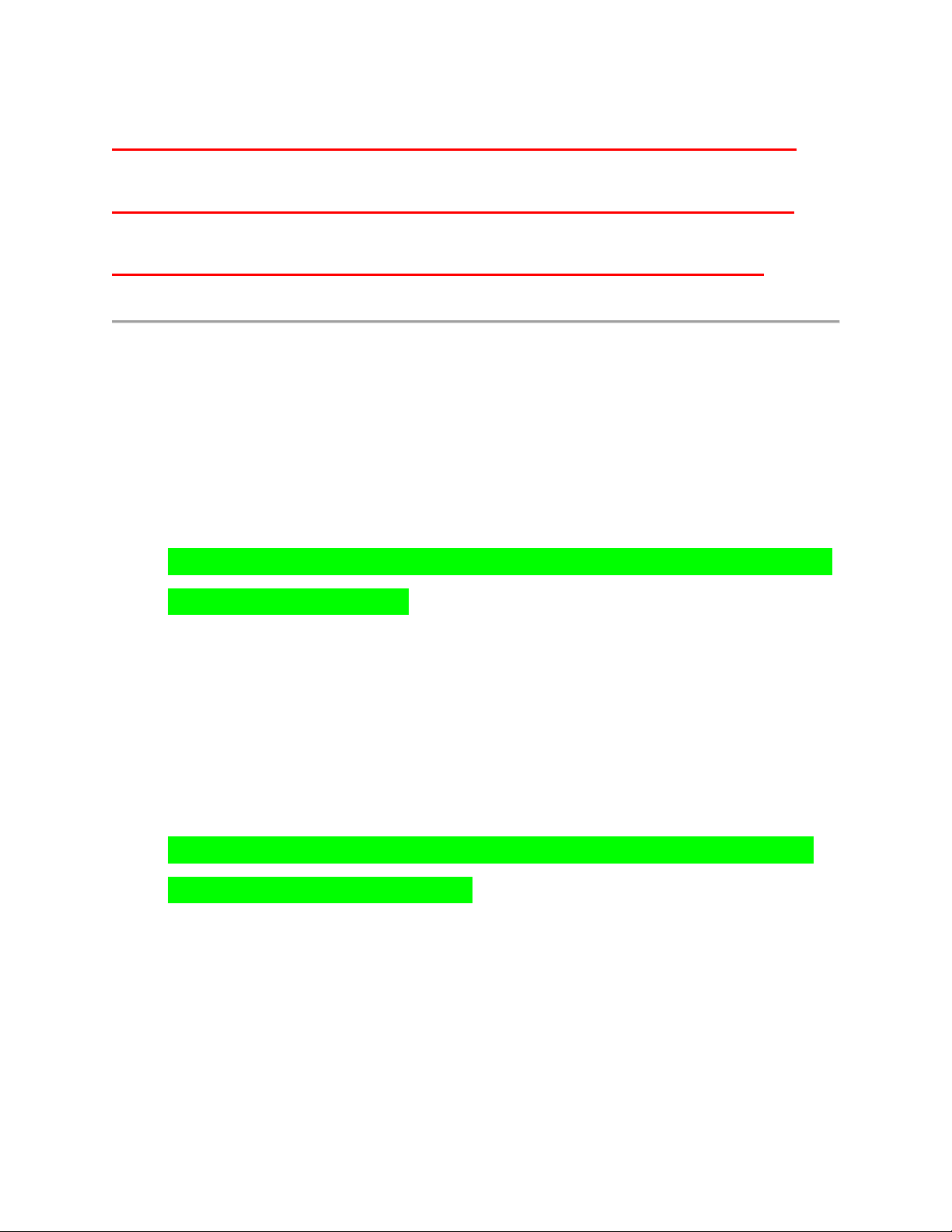
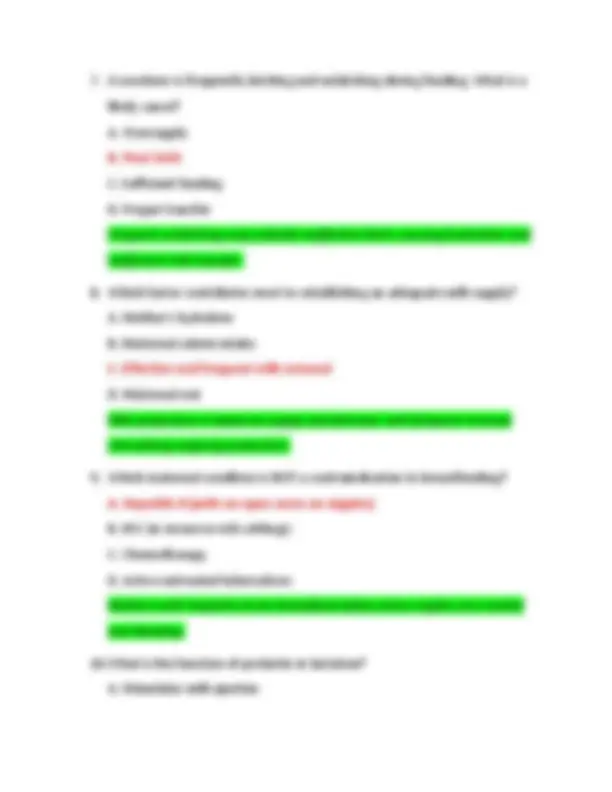
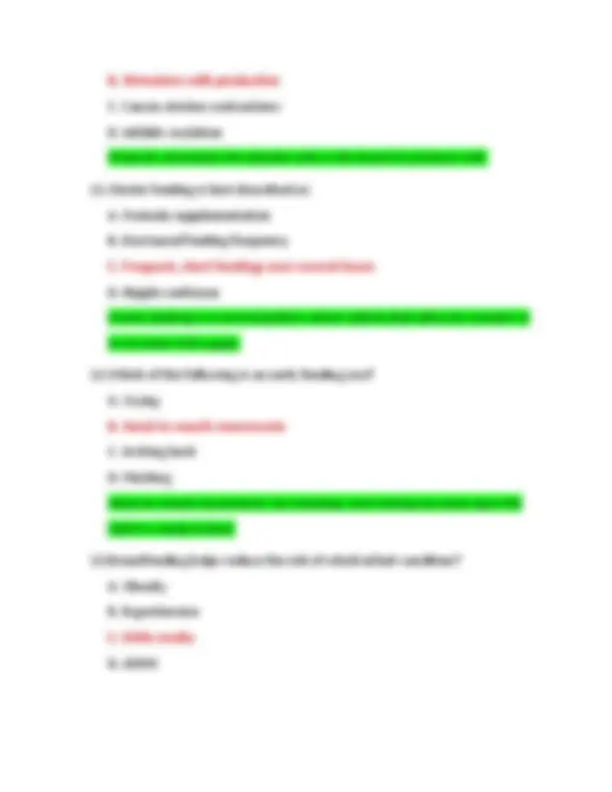
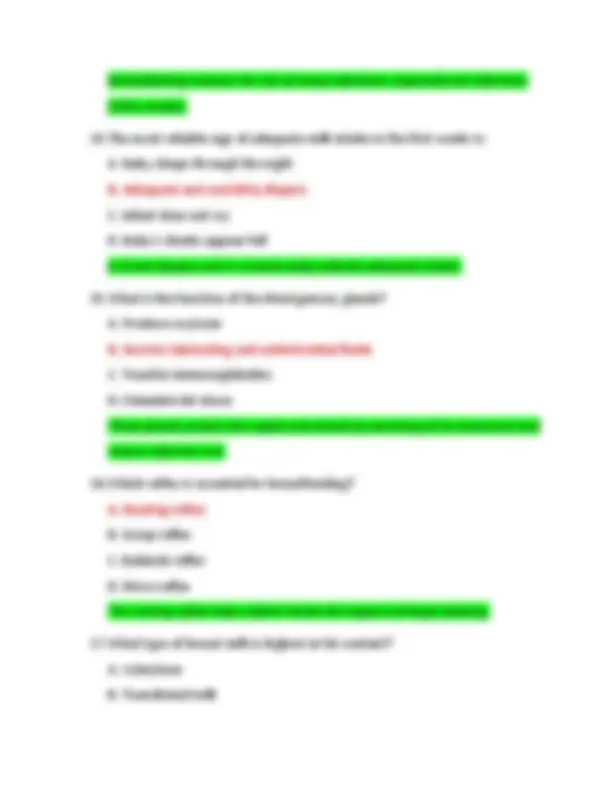

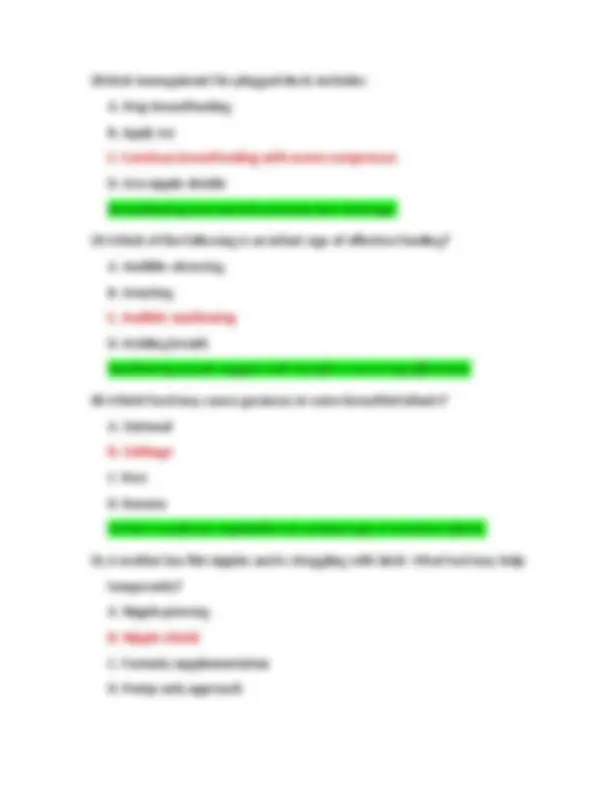
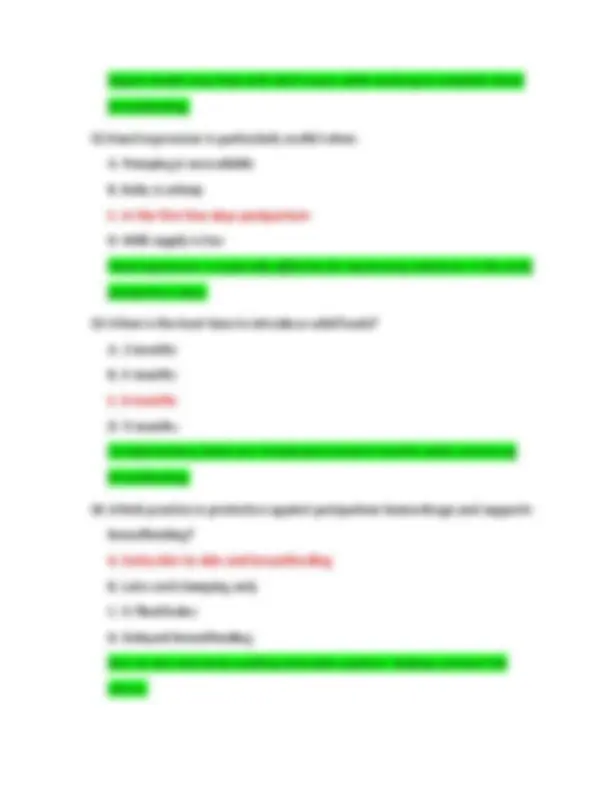
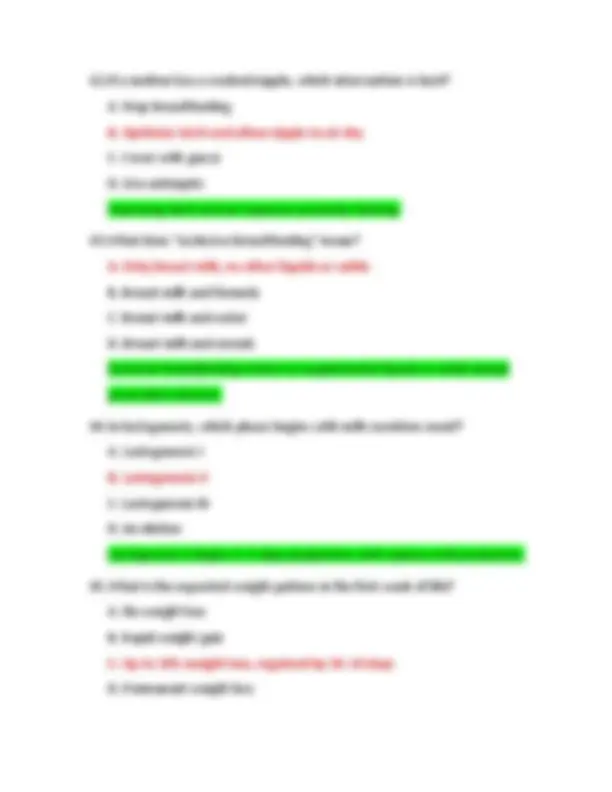
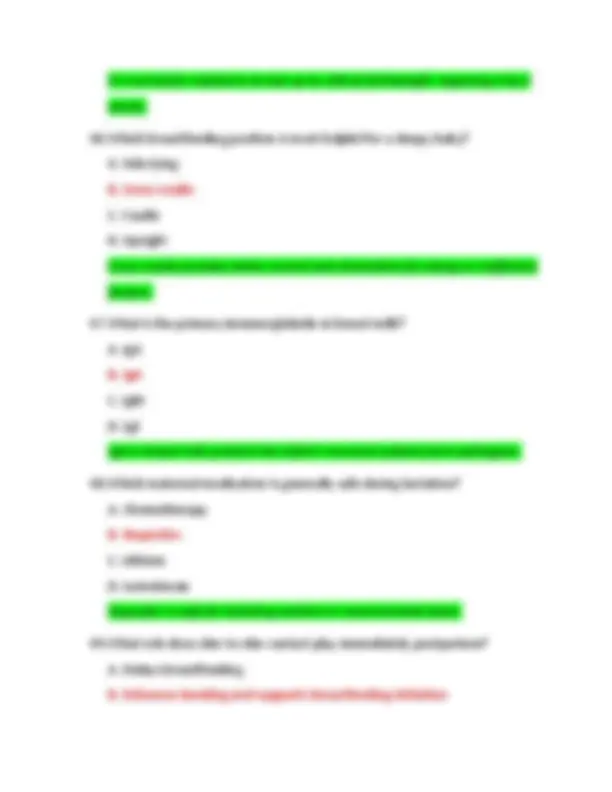
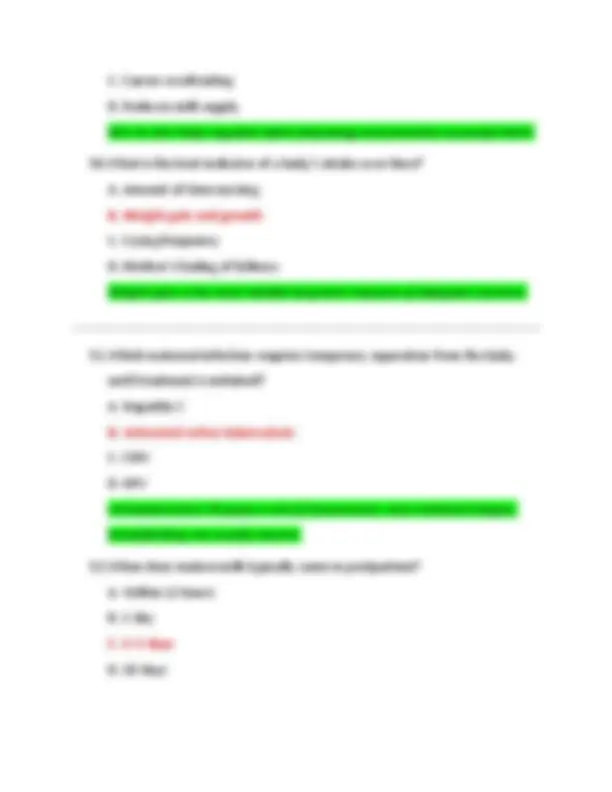

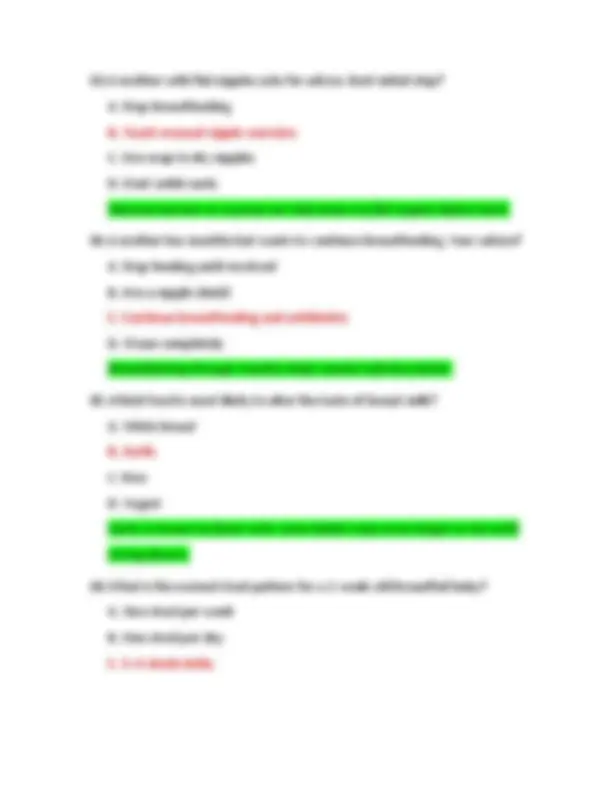
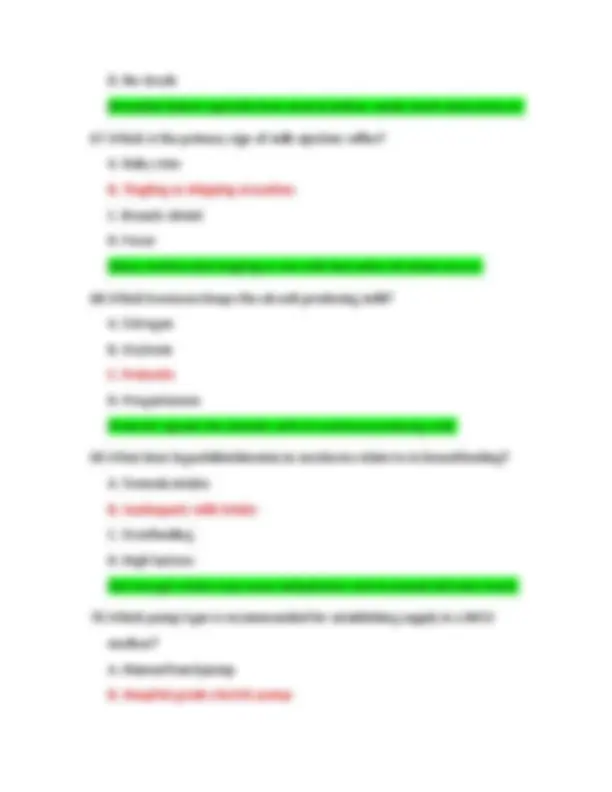
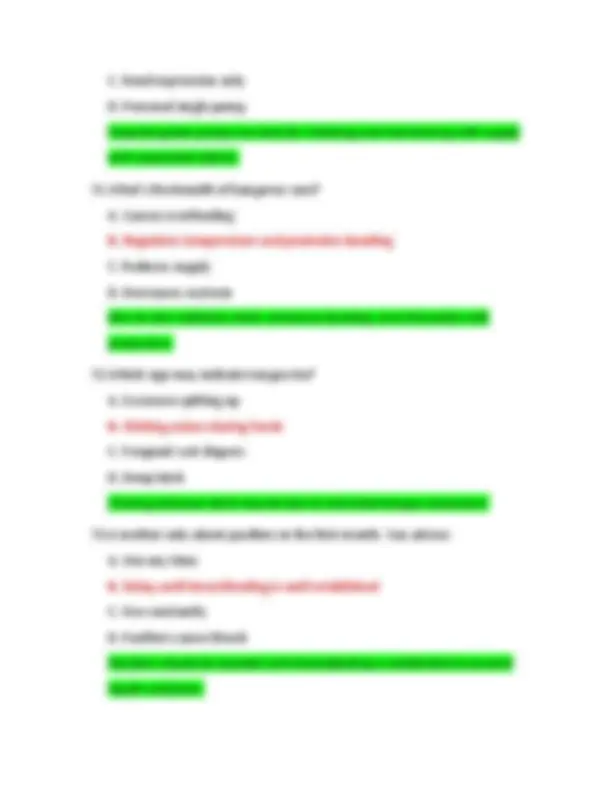
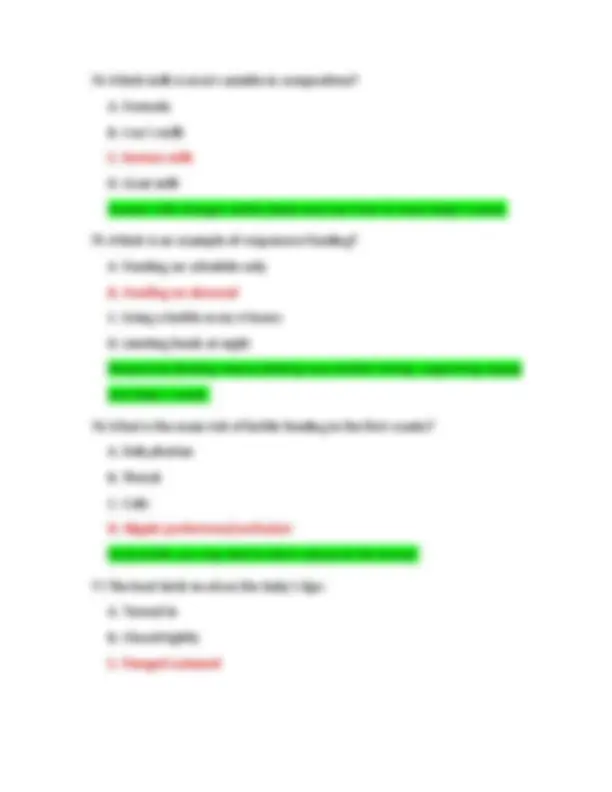
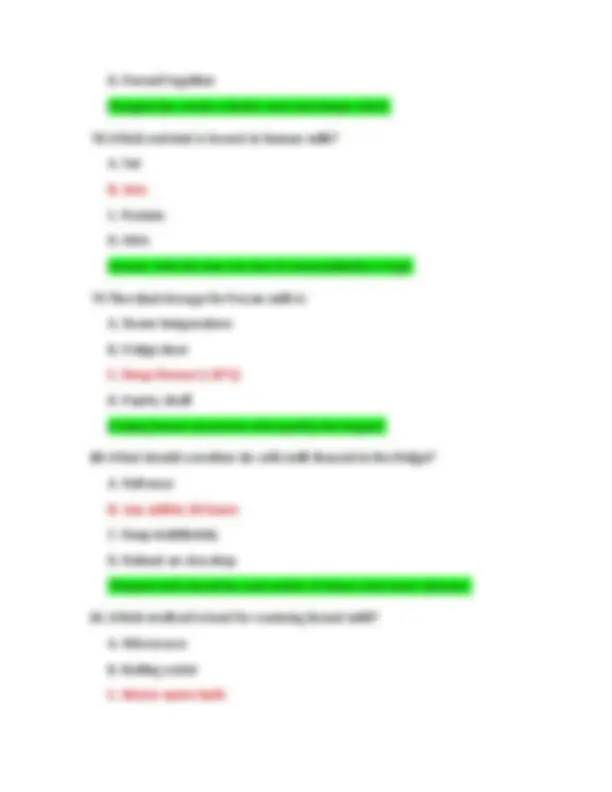
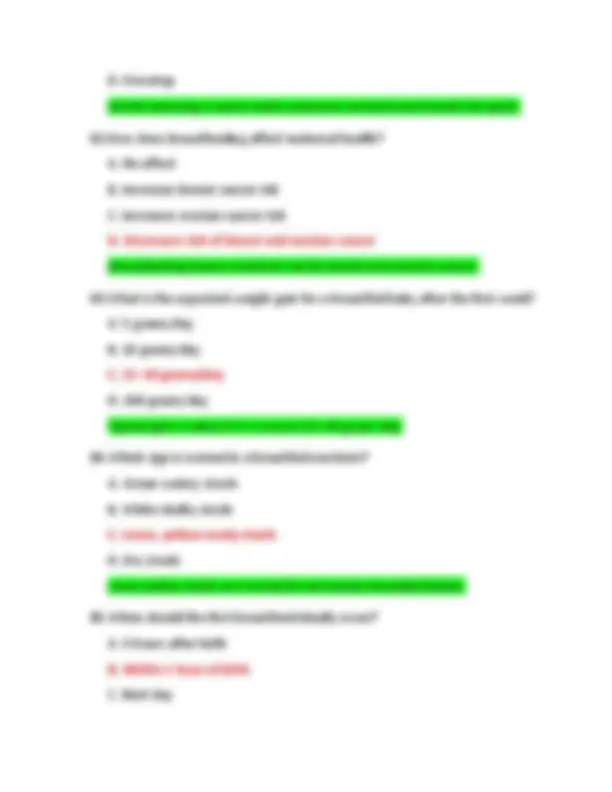
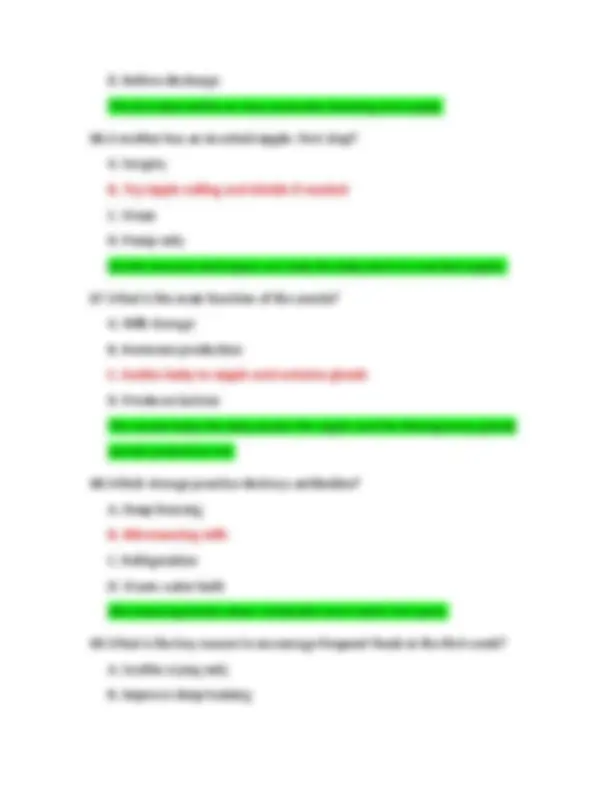
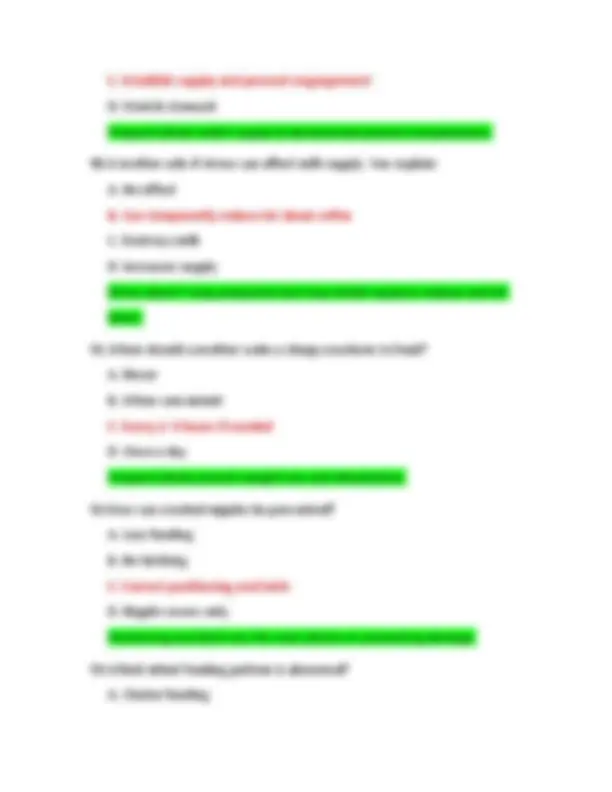
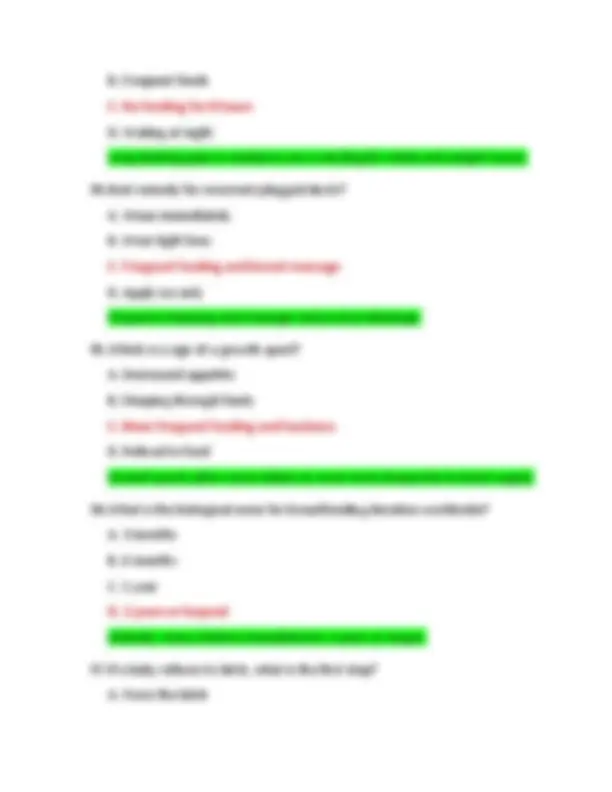
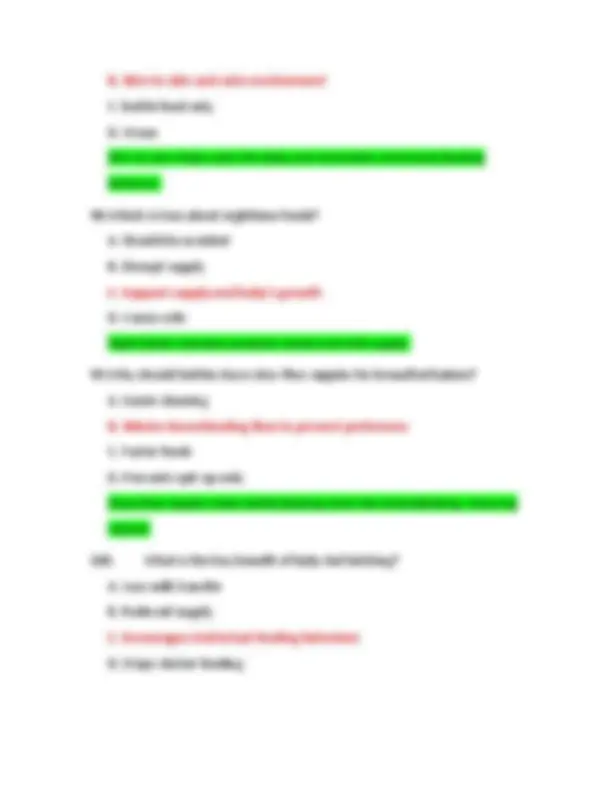

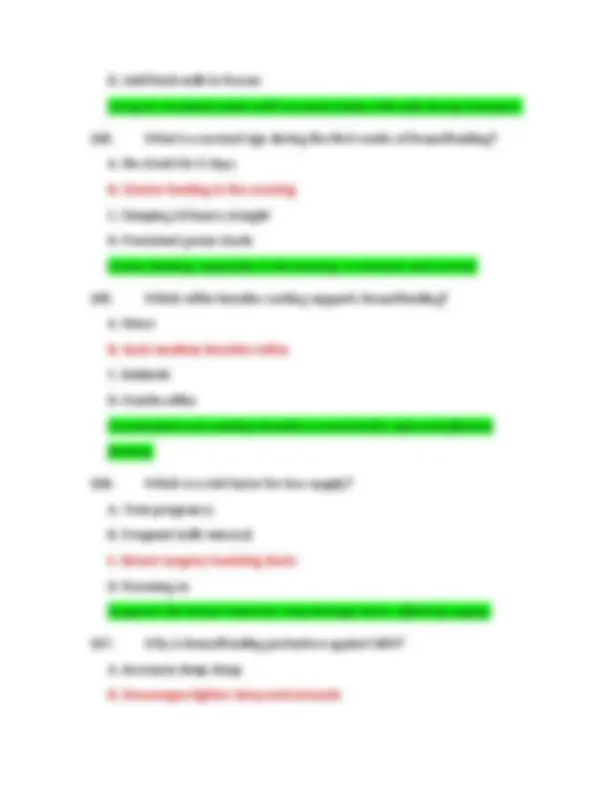
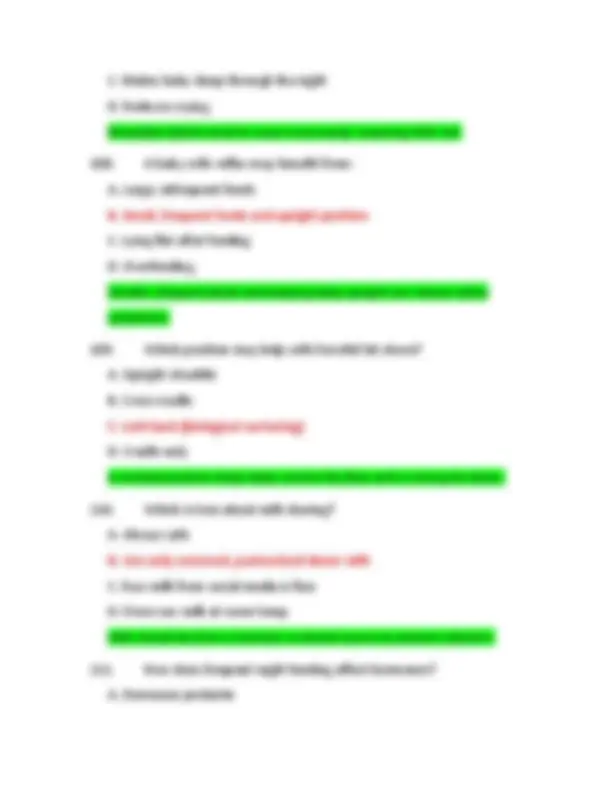
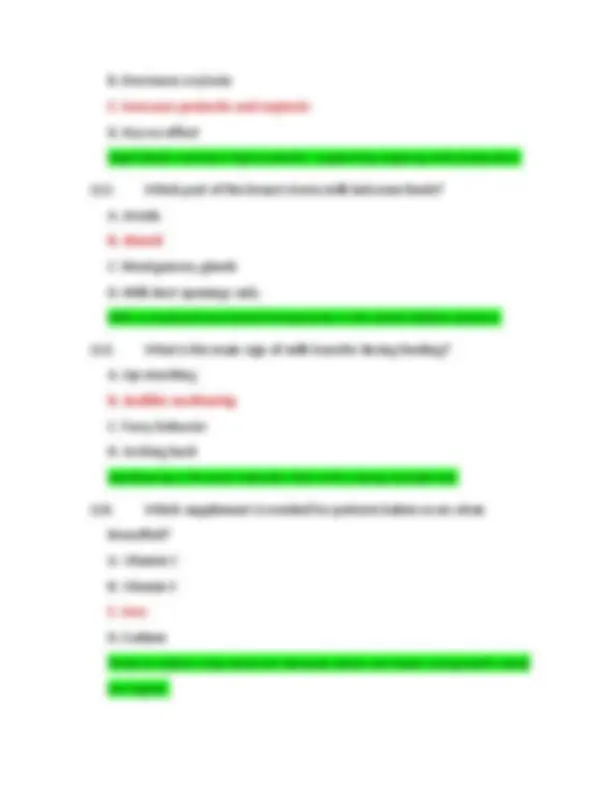
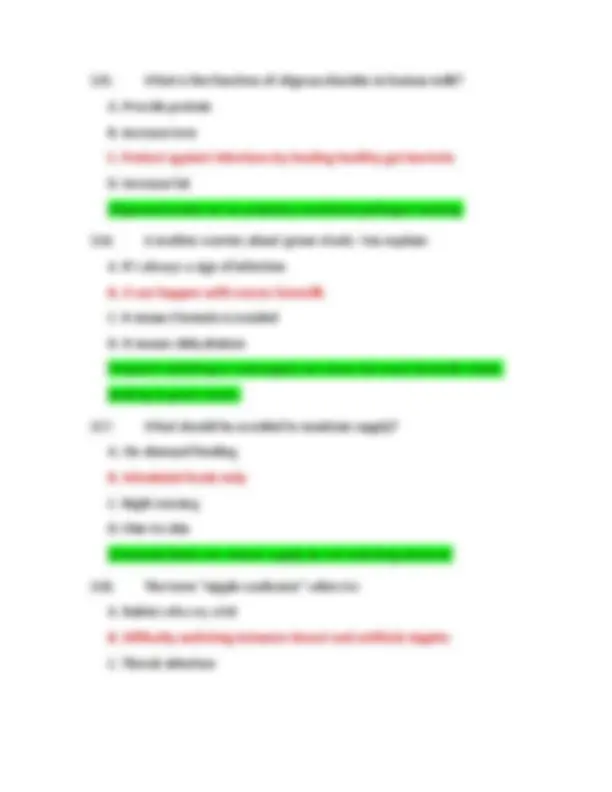
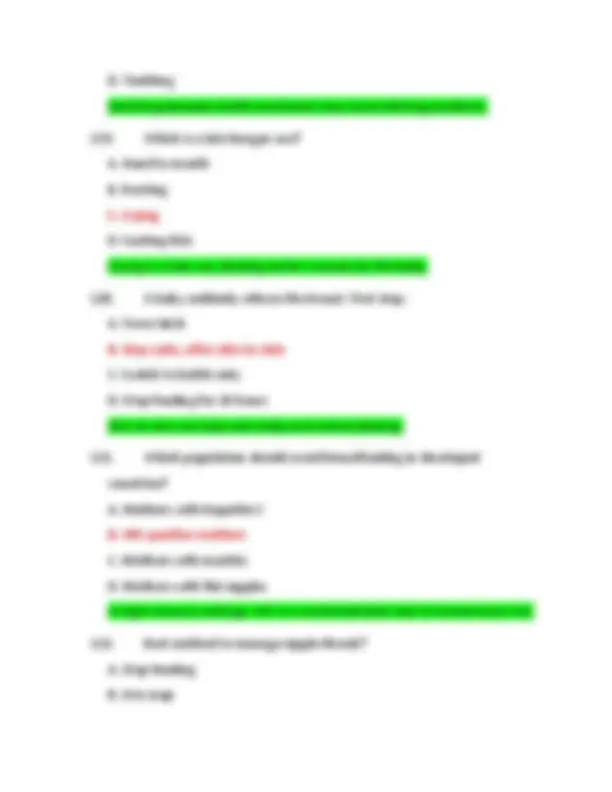
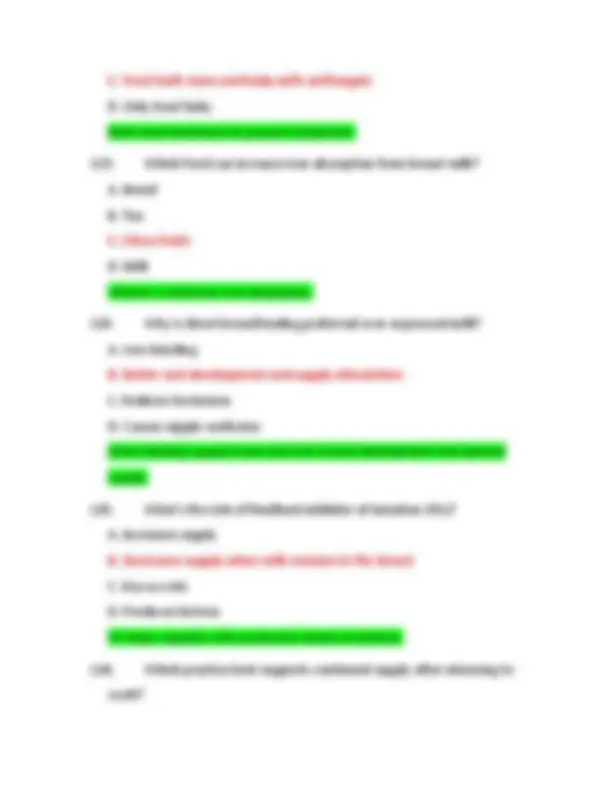
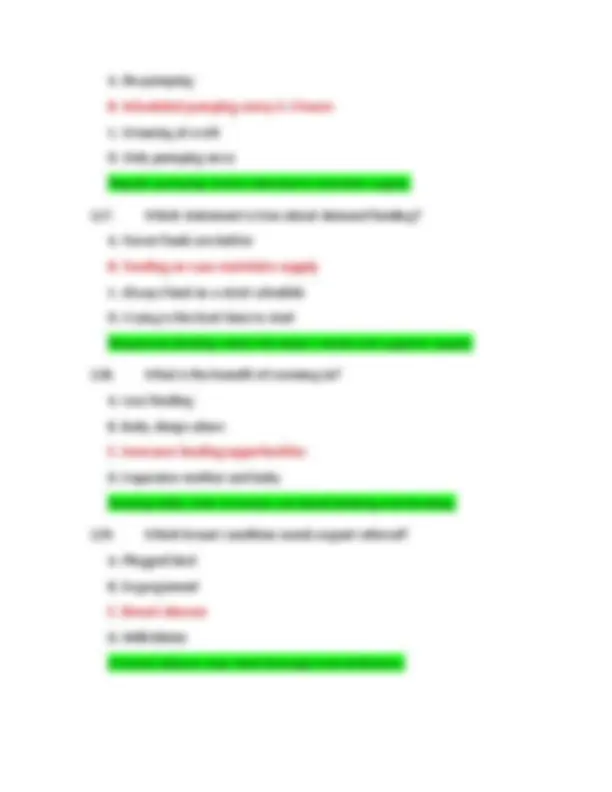
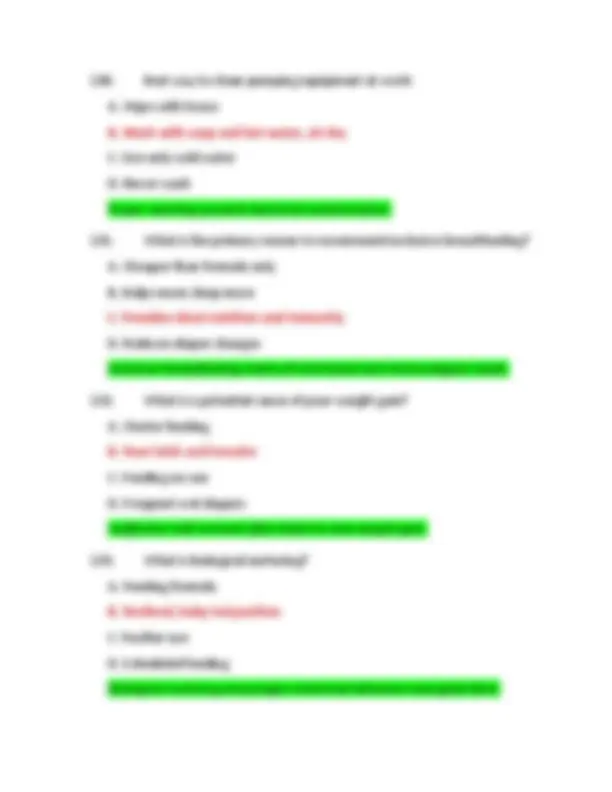
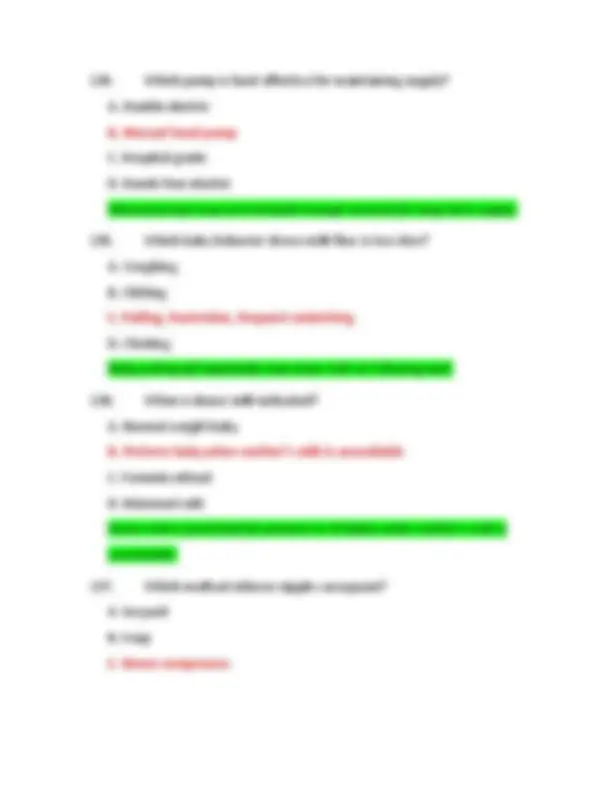
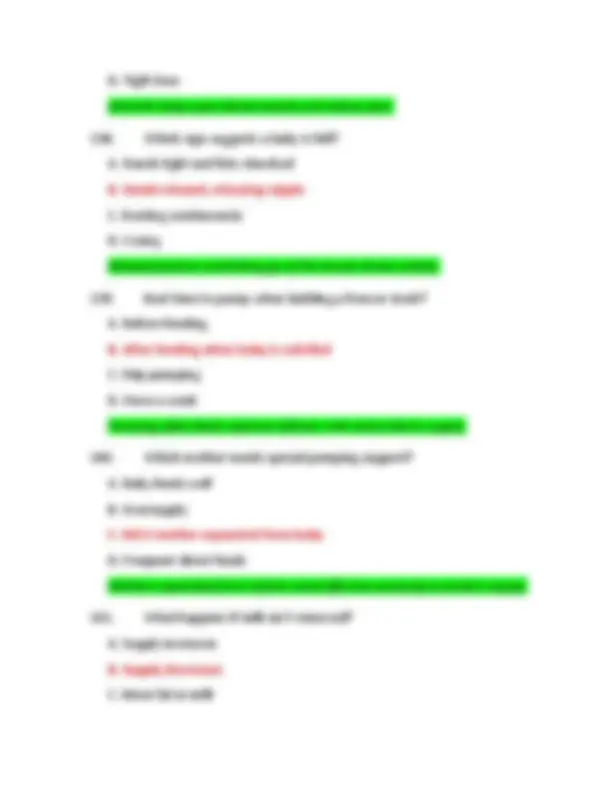
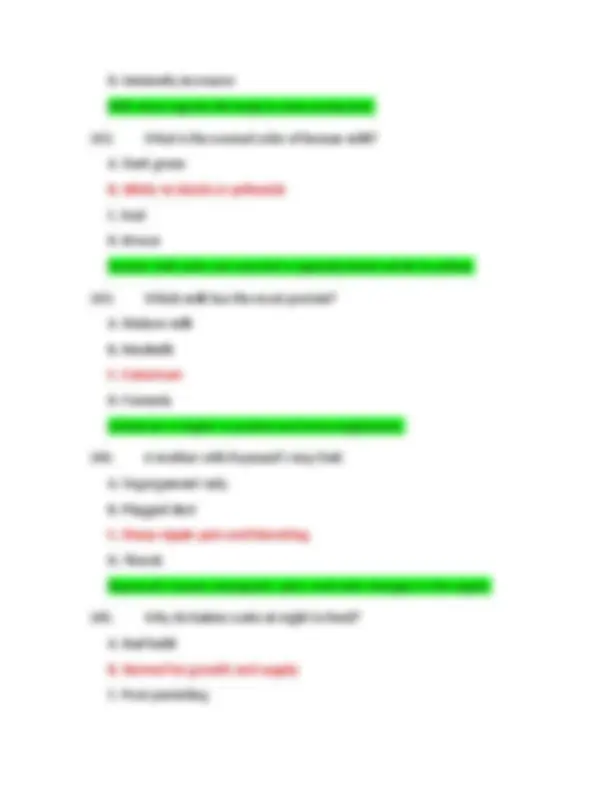
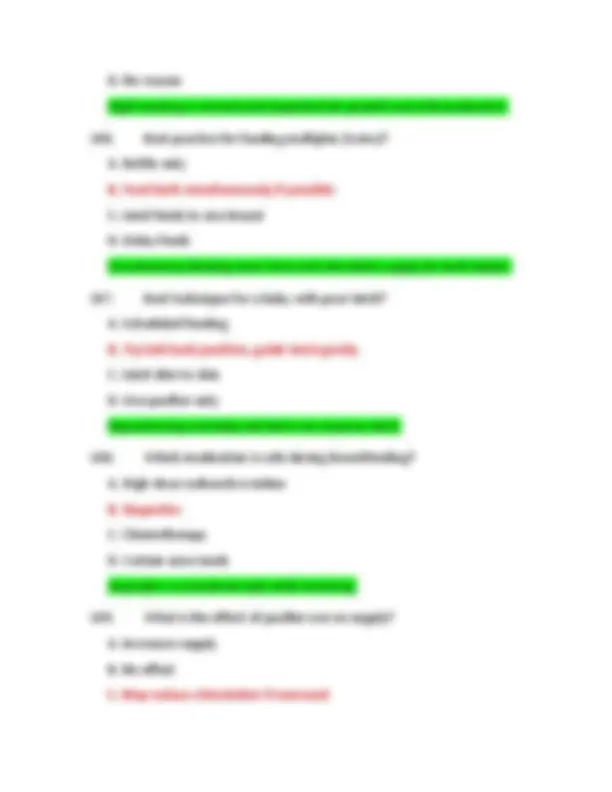
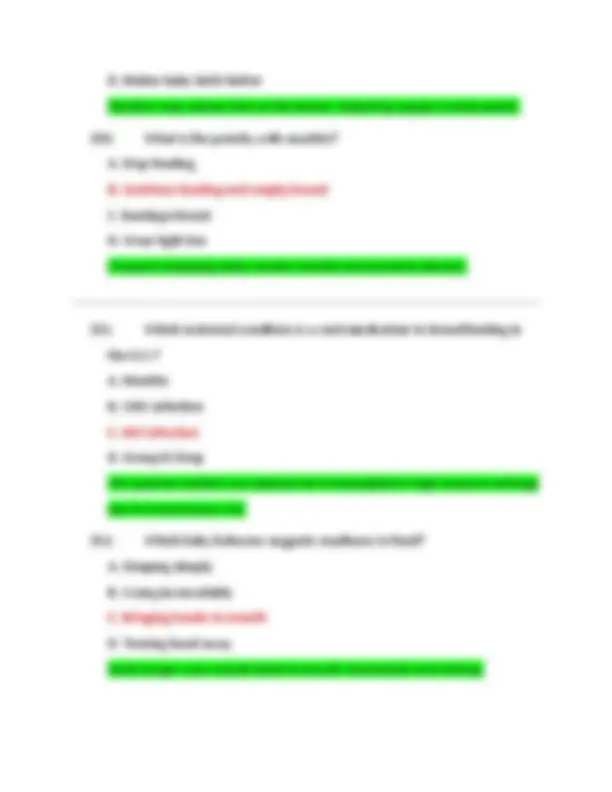
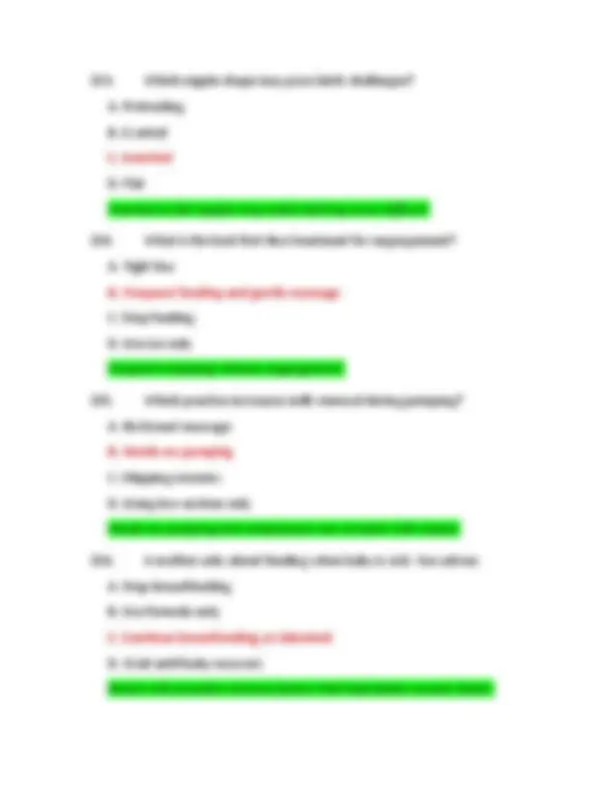
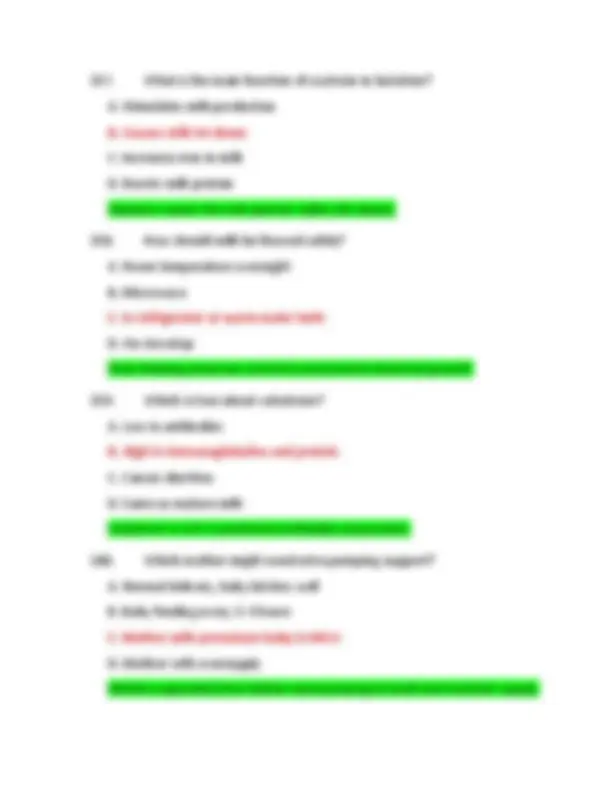
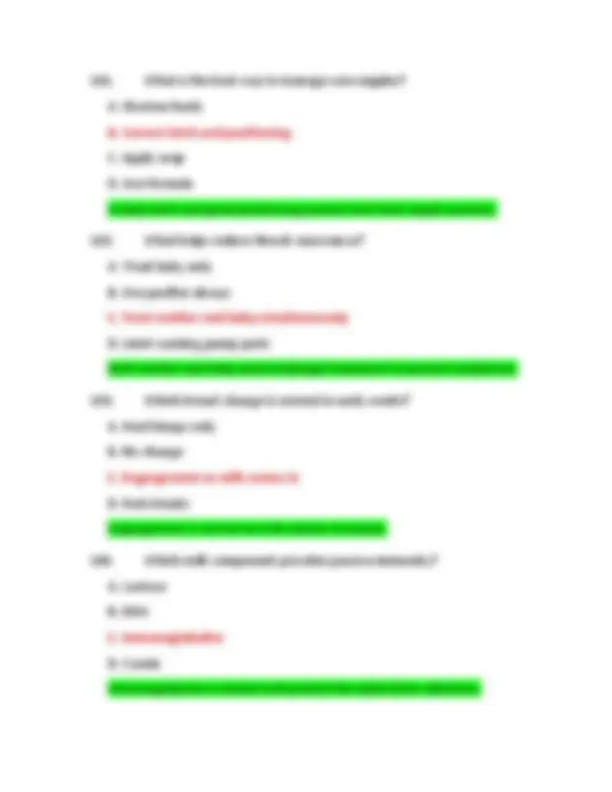
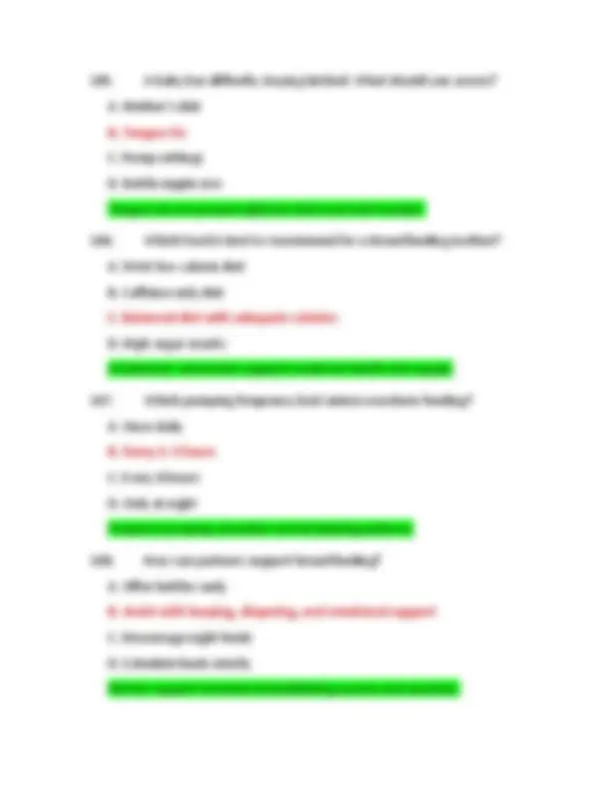
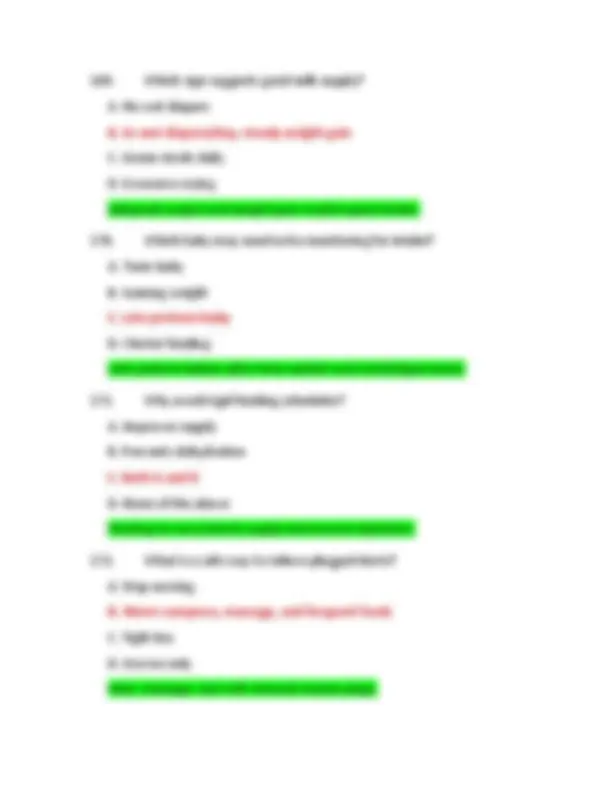
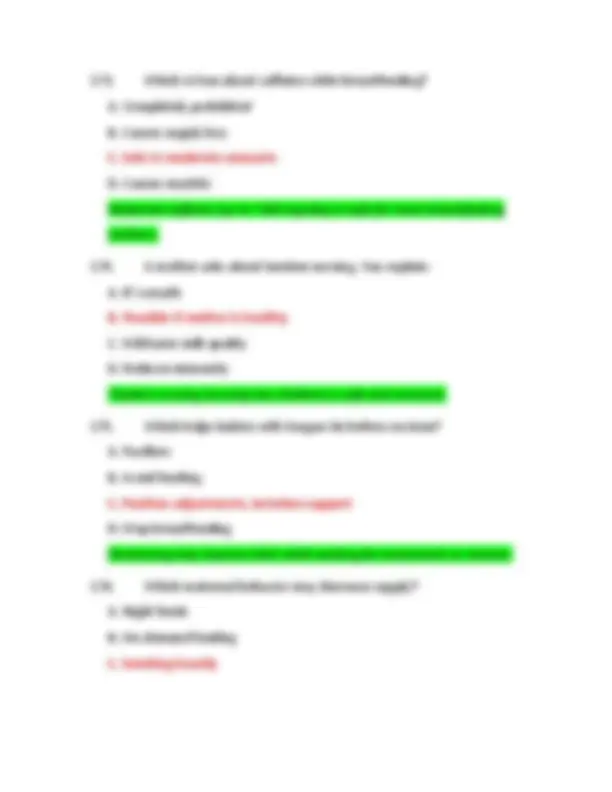
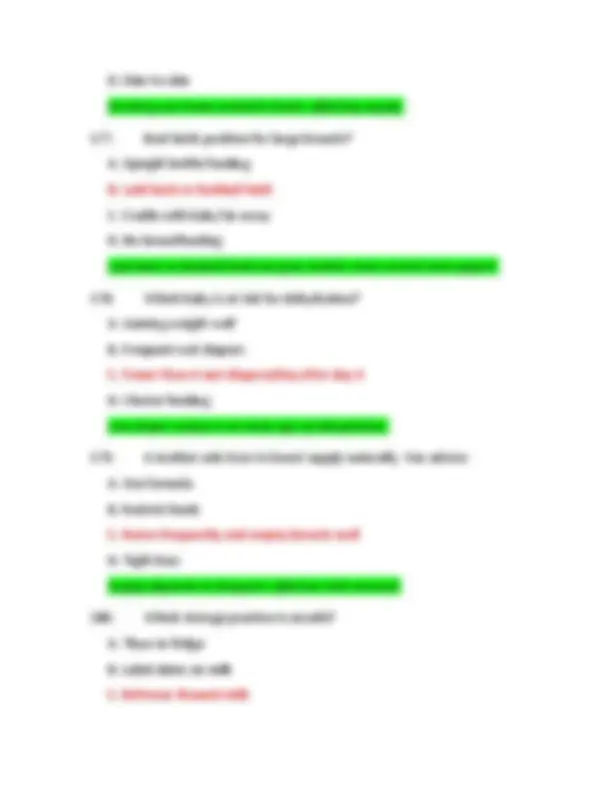
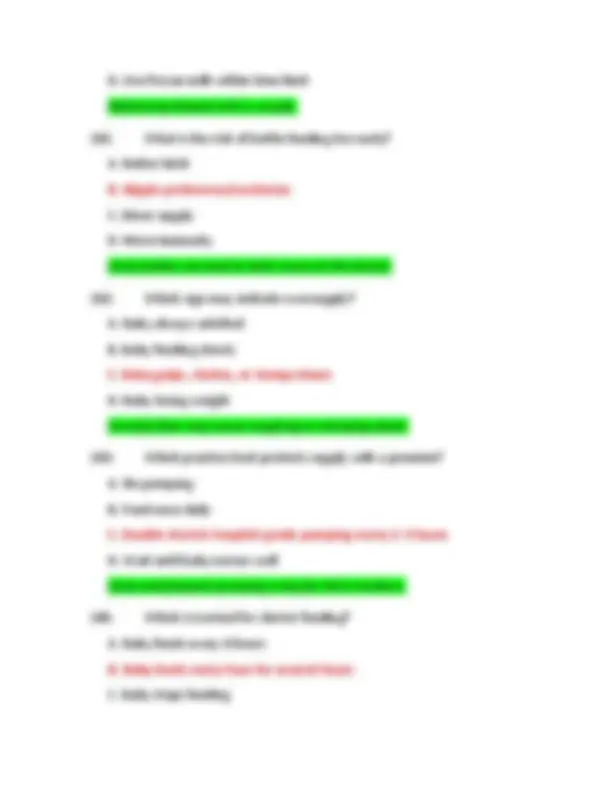
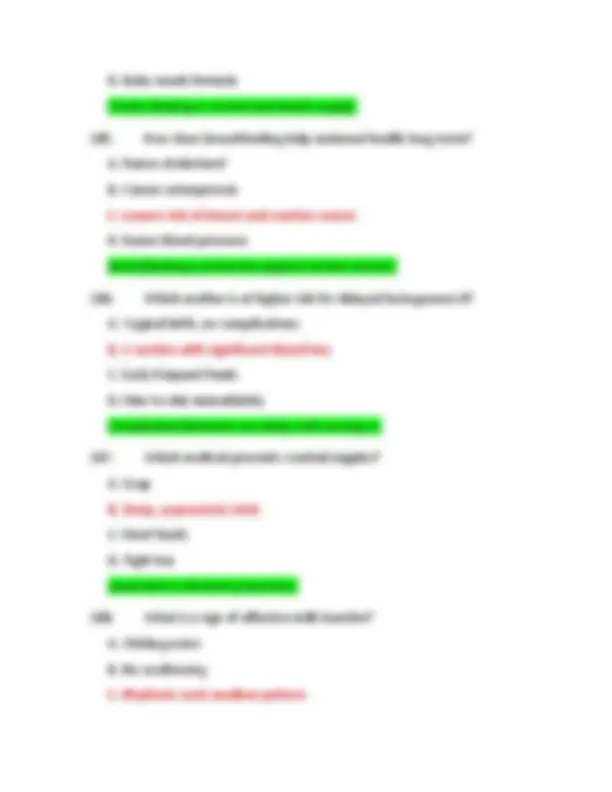
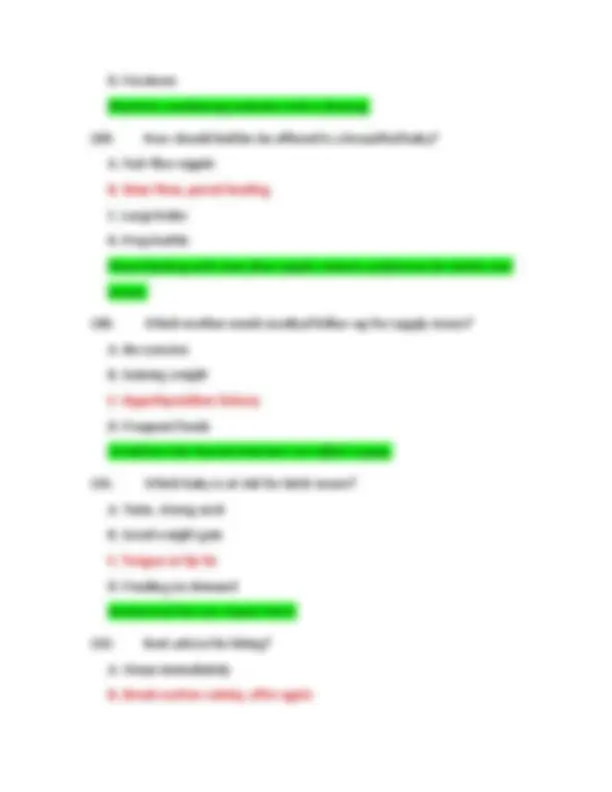
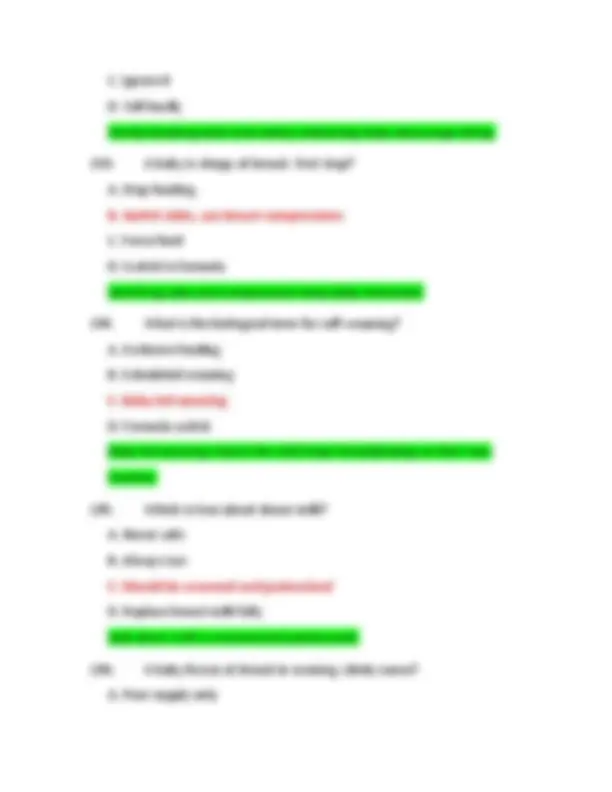
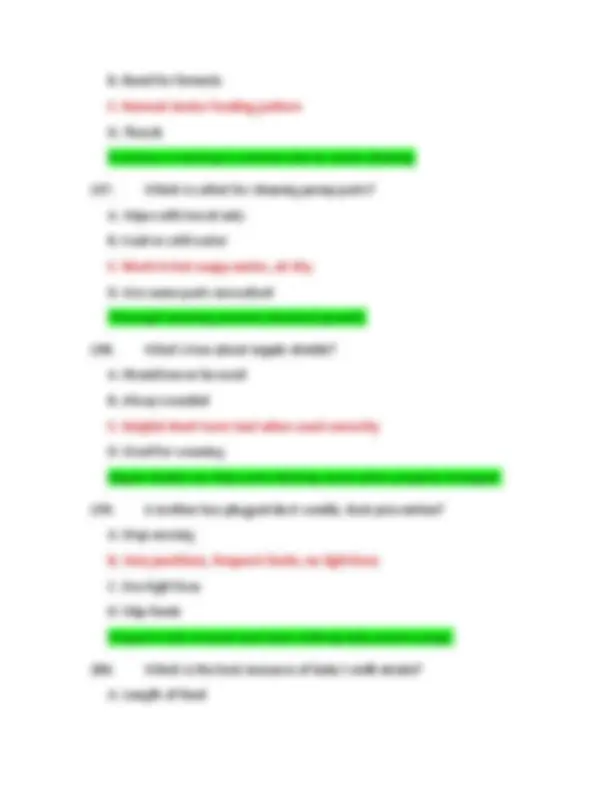
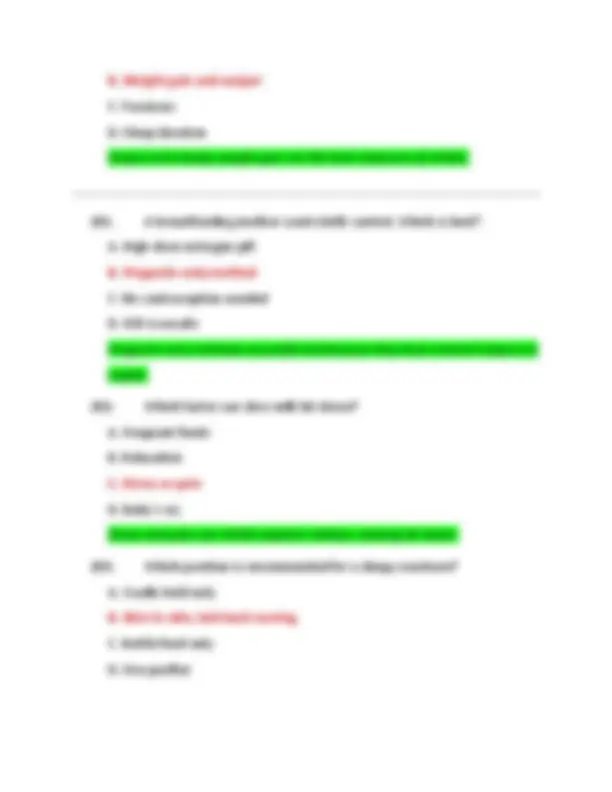
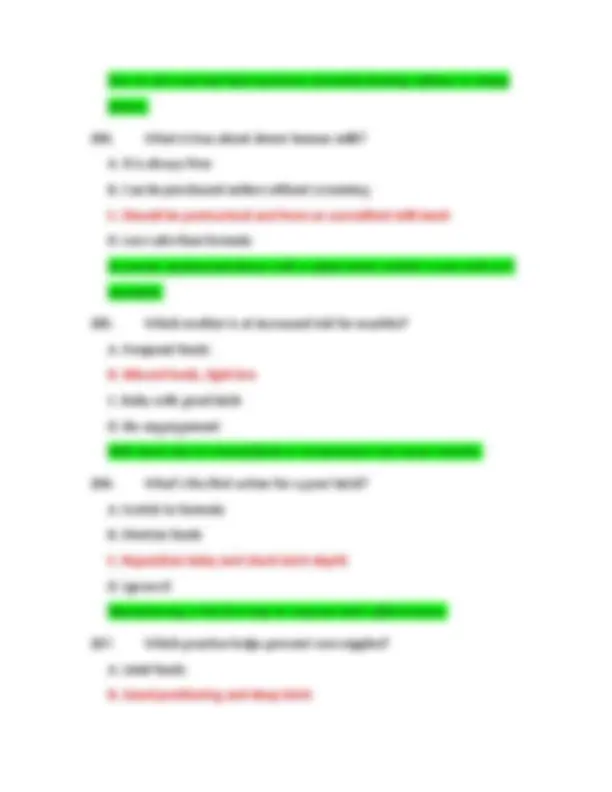
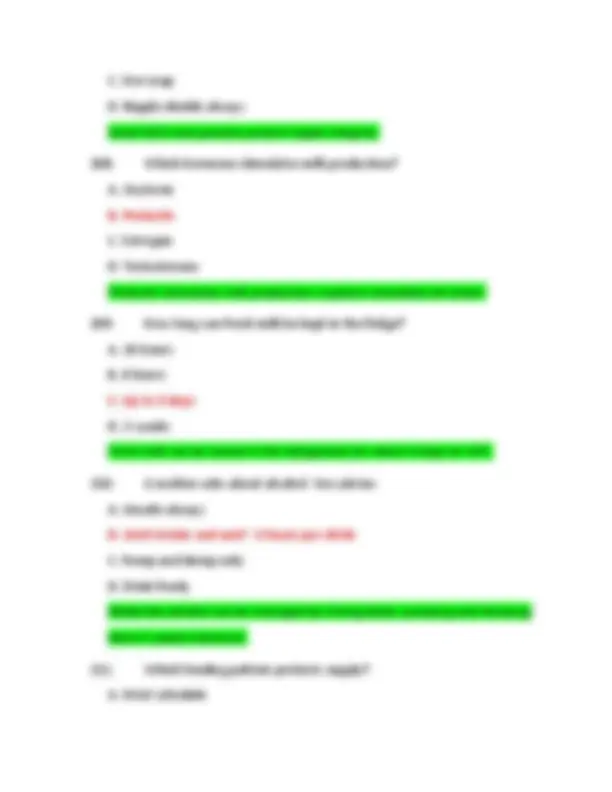
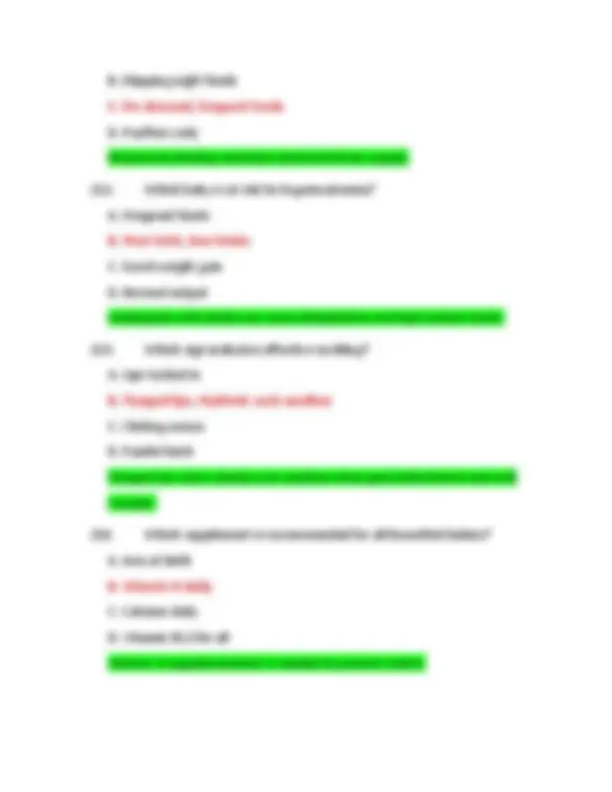
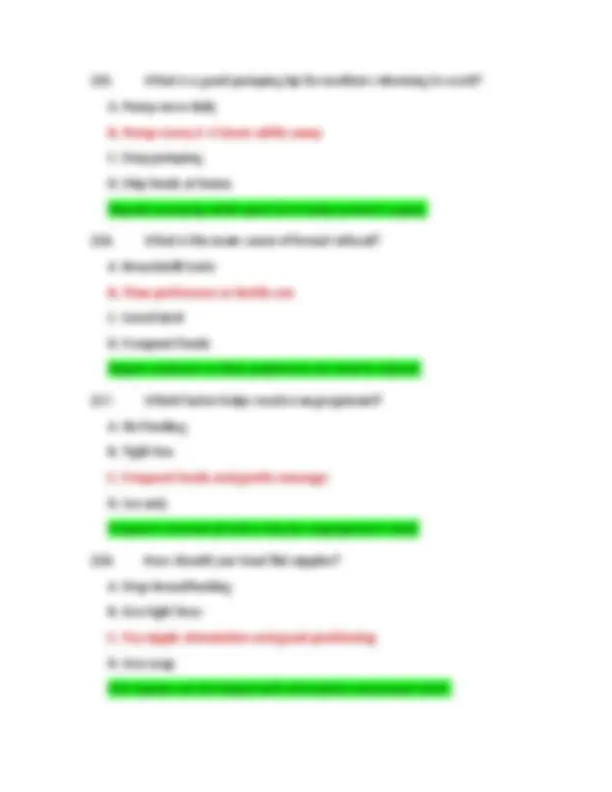
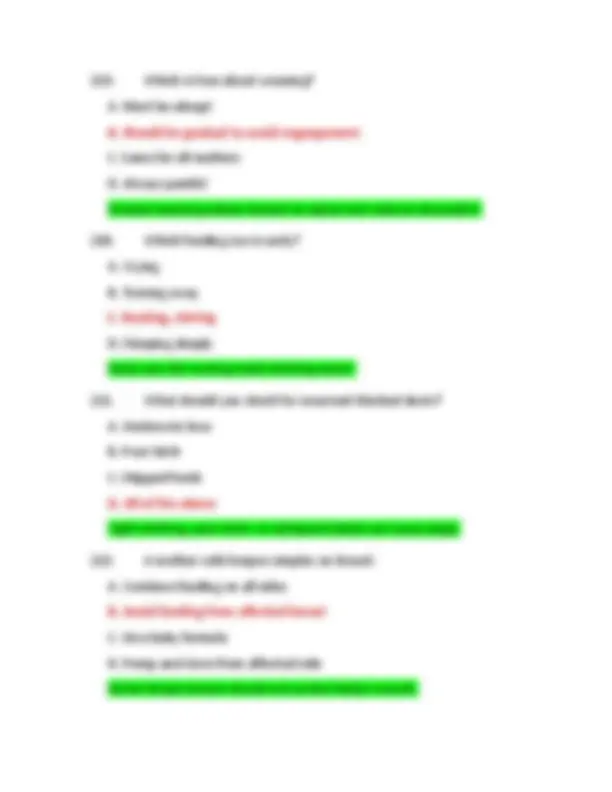
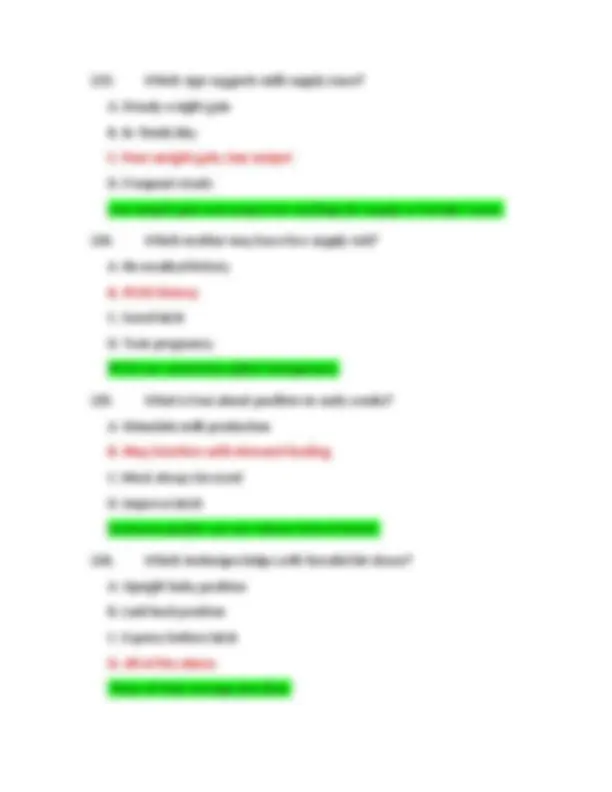
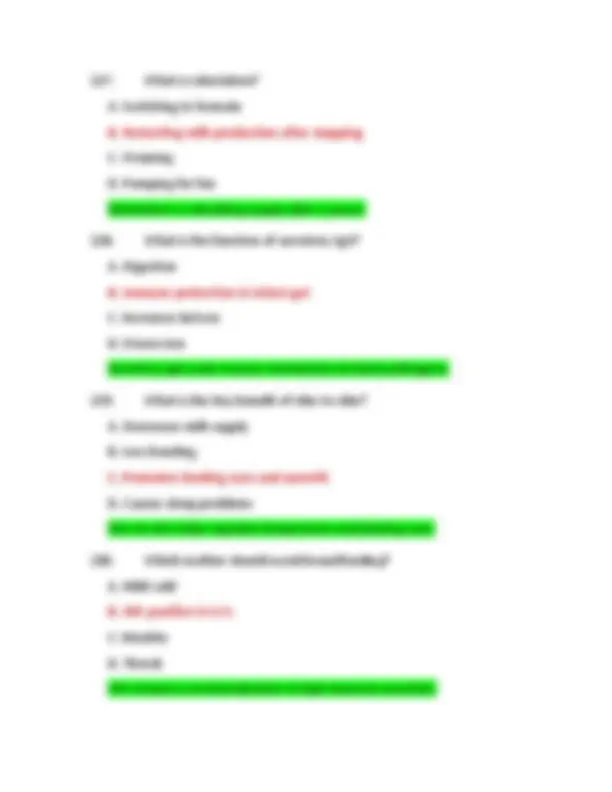
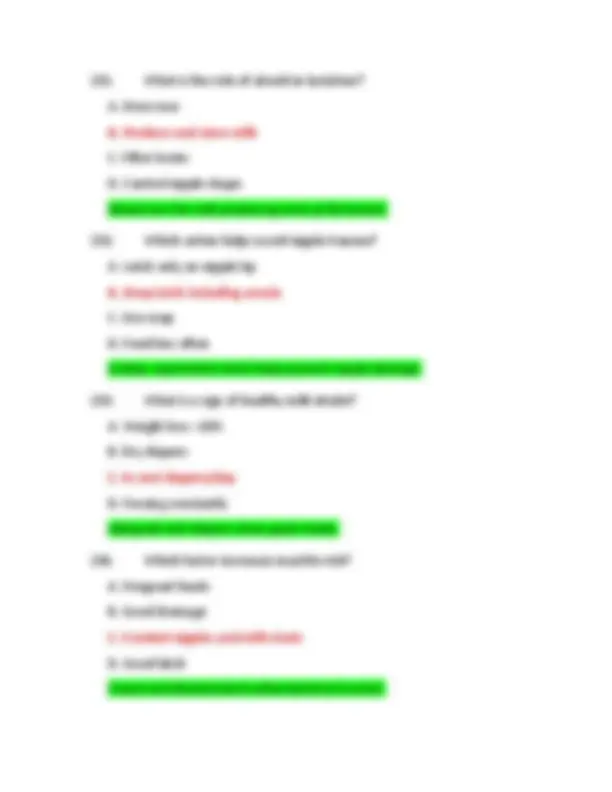
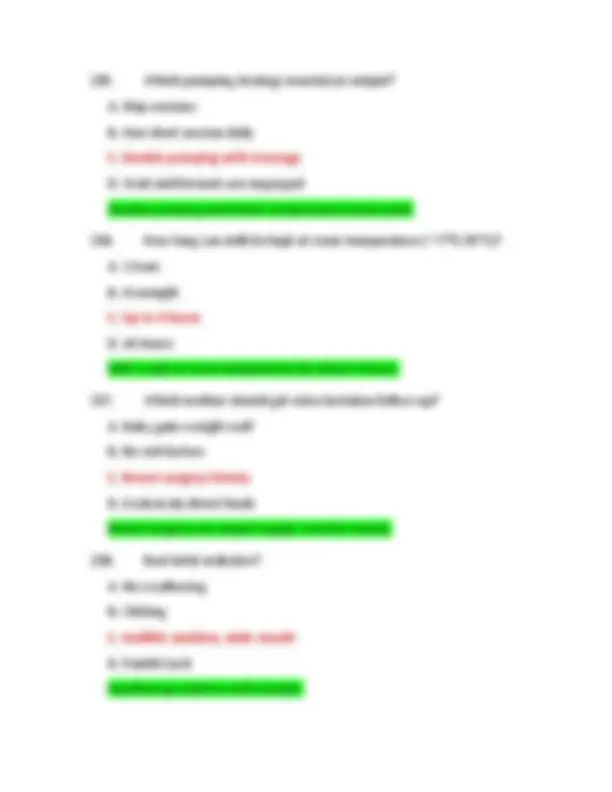
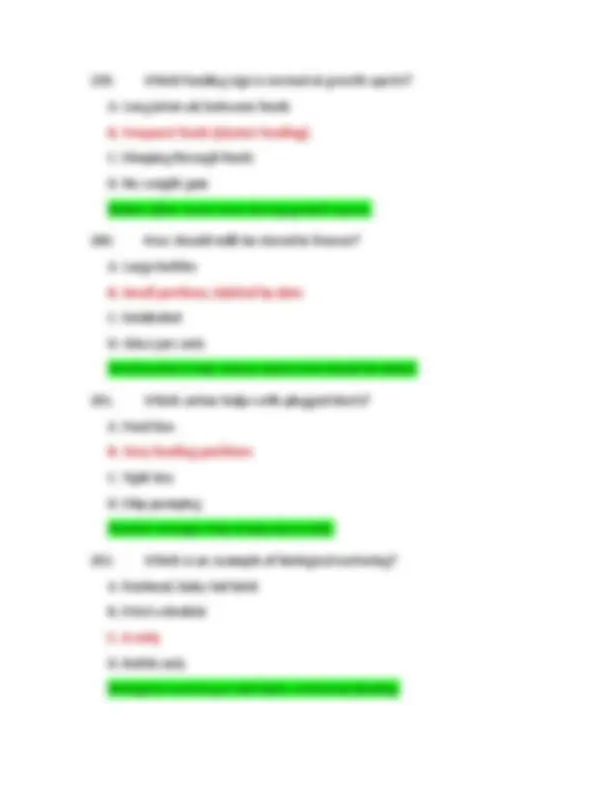
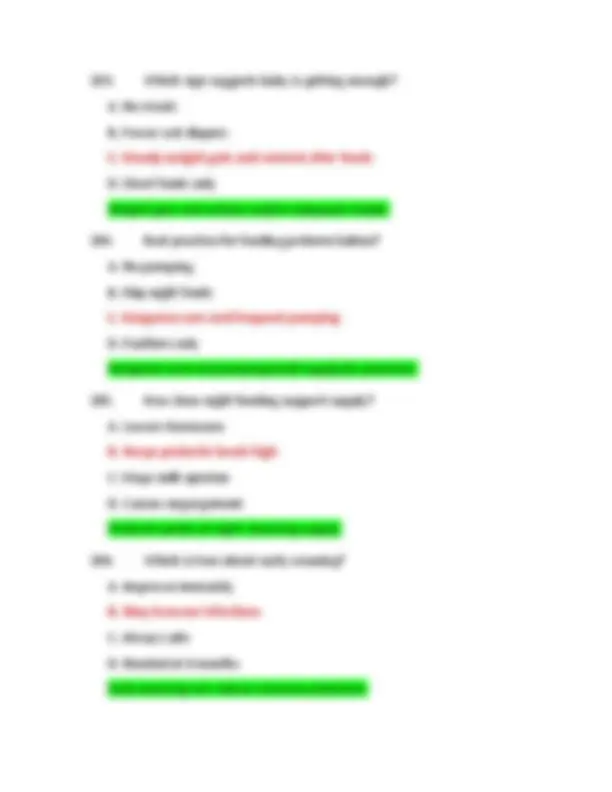
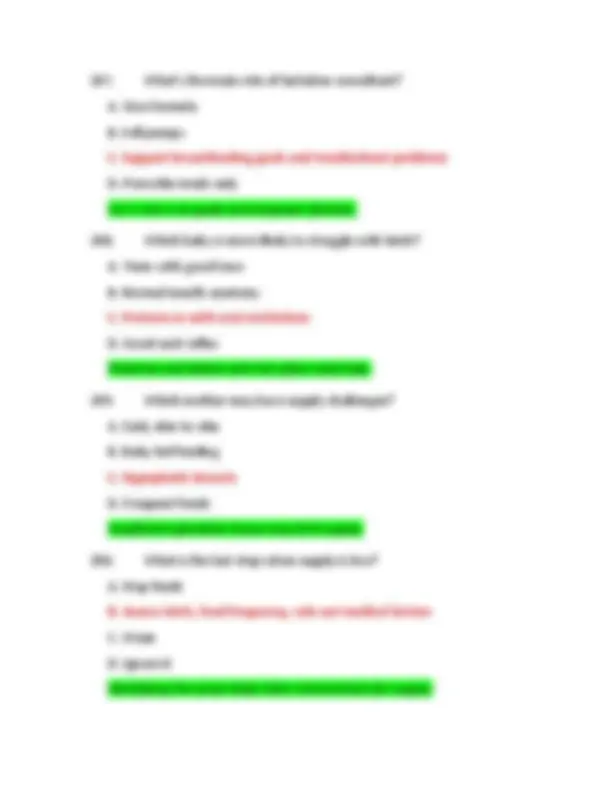
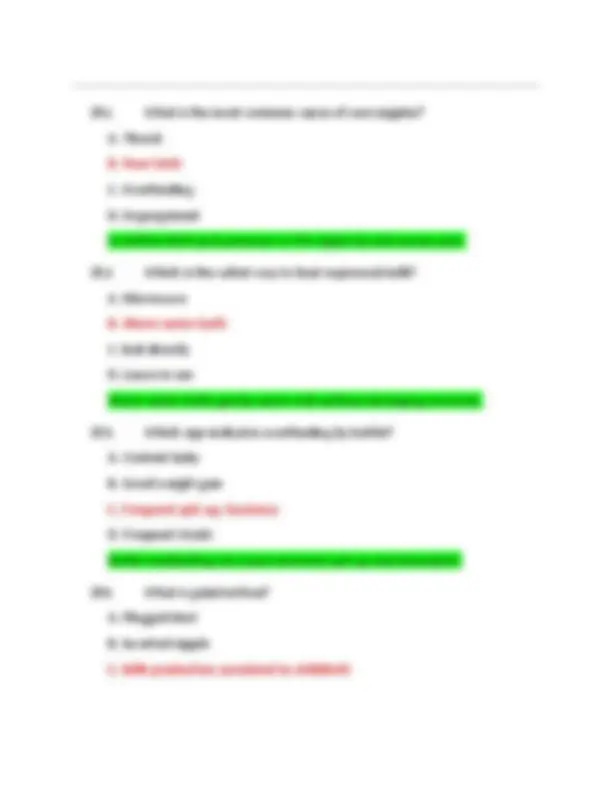
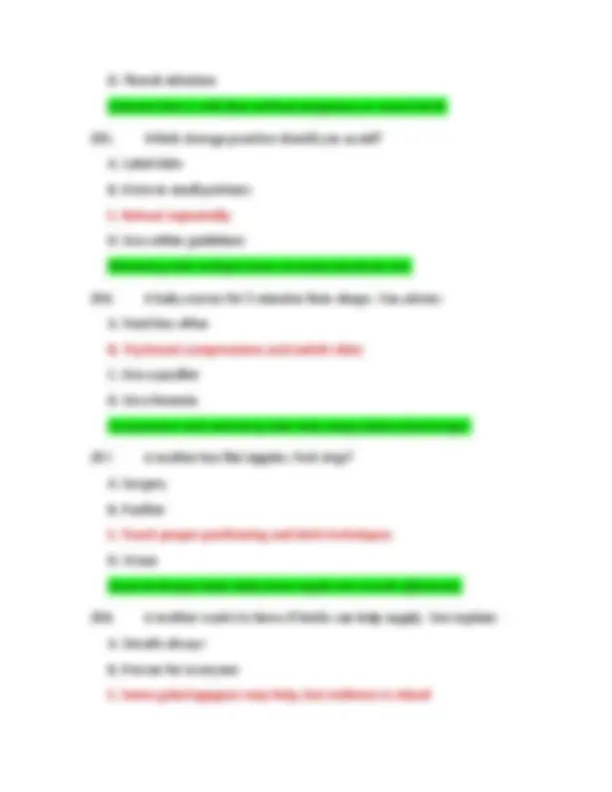
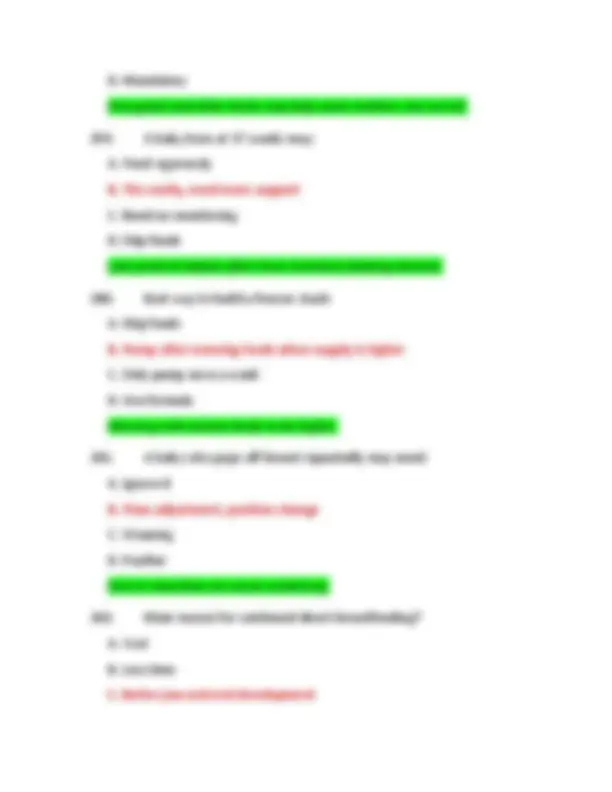
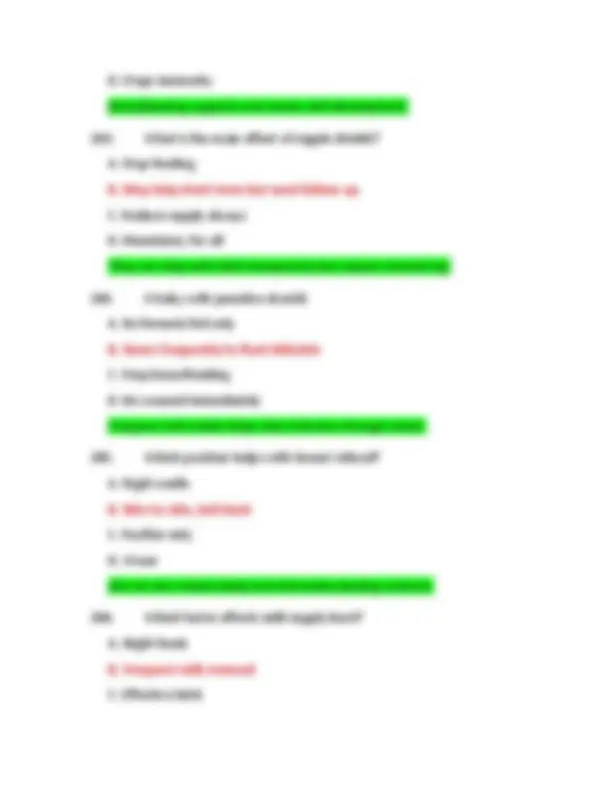
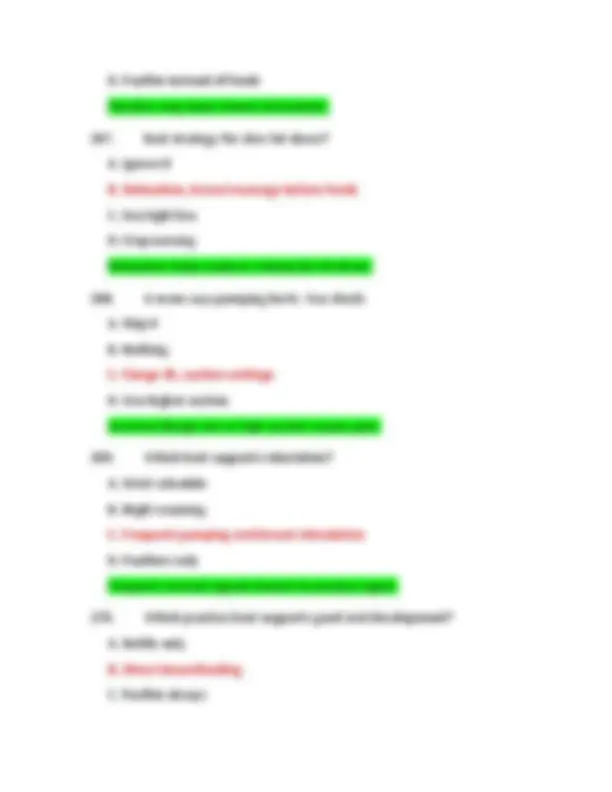
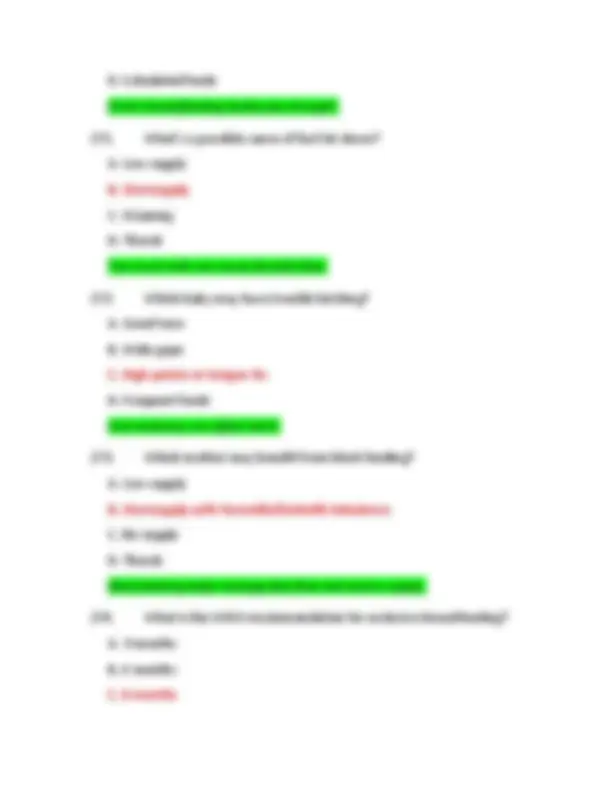
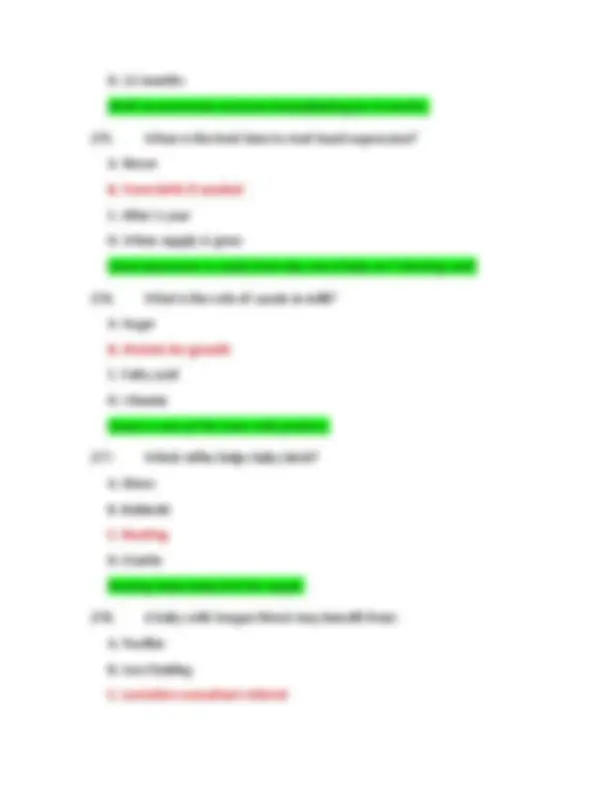
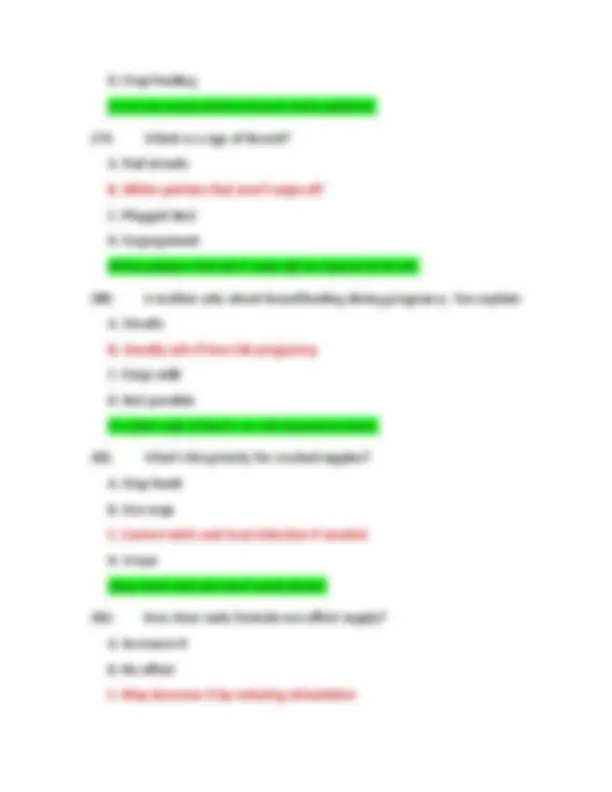
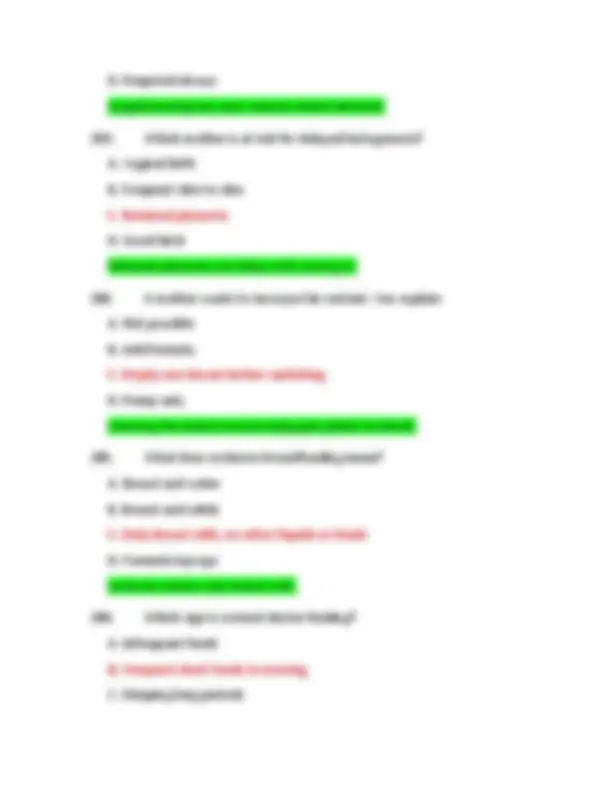
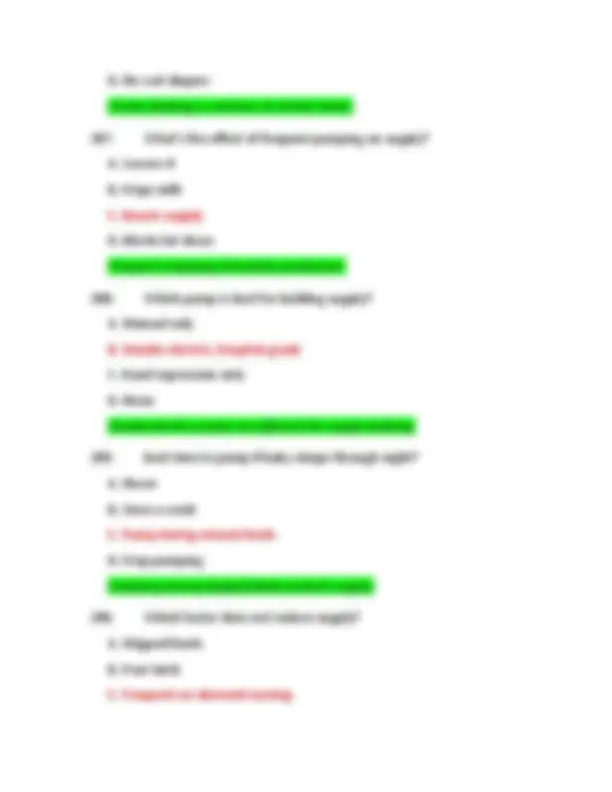
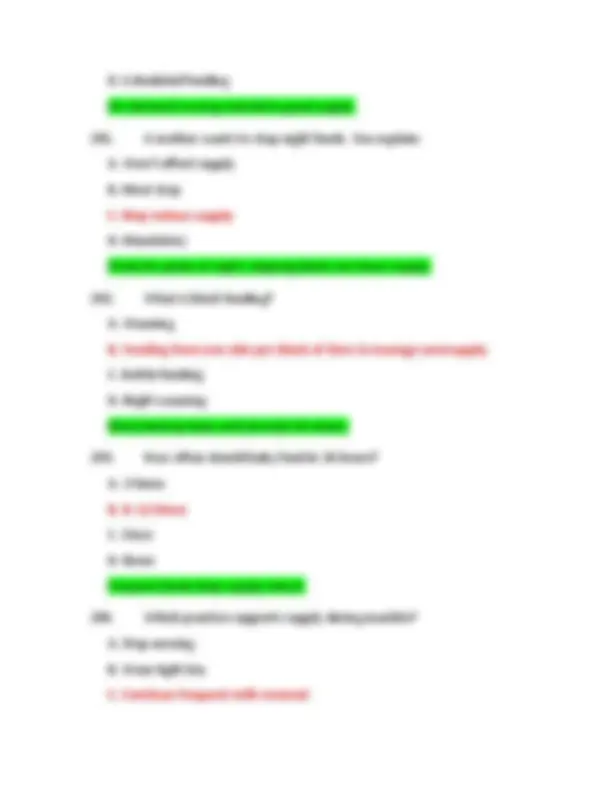
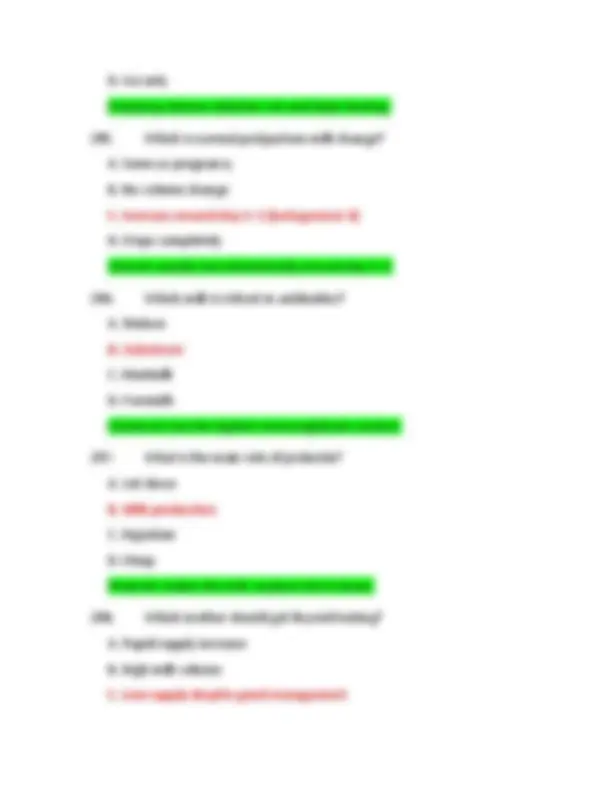
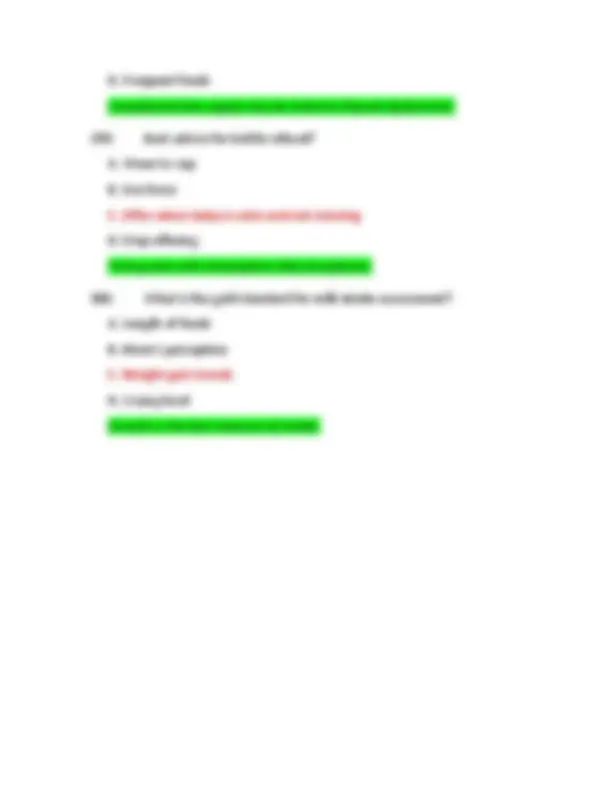


Study with the several resources on Docsity

Earn points by helping other students or get them with a premium plan


Prepare for your exams
Study with the several resources on Docsity

Earn points to download
Earn points by helping other students or get them with a premium plan
Community
Ask the community for help and clear up your study doubts
Discover the best universities in your country according to Docsity users
Free resources
Download our free guides on studying techniques, anxiety management strategies, and thesis advice from Docsity tutors
CLC EXAM TEST BANK 2025 CERTIFIED LACTATION CONSULTANT EXAM TEST BANK 300 QUESTIONS AND CORRECT ANSWERS(VERIFIED ANSWERS)
Typology: Exams
1 / 80

This page cannot be seen from the preview
Don't miss anything!









































































Colostrum contains high concentrations of immunoglobulins, especially IgA, which provides passive immunity.
B. Stimulates milk production C. Causes uterine contractions D. Inhibits ovulation Prolactin stimulates the alveolar cells in the breast to produce milk. 11.Cluster feeding is best described as: A. Formula supplementation B. Decreased feeding frequency C. Frequent, short feedings over several hours D. Nipple confusion Cluster feeding is a normal pattern where infants feed often for comfort or to increase milk supply. 12.Which of the following is an early feeding cue? A. Crying B. Hand-to-mouth movements C. Arching back D. Flushing Hand-to-mouth movements, lip smacking, and rooting are early signs the infant is ready to feed. 13.Breastfeeding helps reduce the risk of which infant condition? A. Obesity B. Hypertension C. Otitis media D. ADHD
Breastfeeding reduces the risk of many infections, especially ear infections (otitis media). 14.The most reliable sign of adequate milk intake in the first weeks is: A. Baby sleeps through the night B. Adequate wet and dirty diapers C. Infant does not cry D. Baby's cheeks appear full 6 – 8 wet diapers and 3–4 stools daily indicate adequate intake. 15.What is the function of the Montgomery glands? A. Produce oxytocin B. Secrete lubricating and antimicrobial fluids C. Transfer immunoglobulins D. Stimulate let-down These glands protect the nipple and areola by secreting oil to moisturize and reduce infection risk. 16.Which reflex is essential for breastfeeding? A. Rooting reflex B. Grasp reflex C. Babinski reflex D. Moro reflex The rooting reflex helps infants locate the nipple and begin feeding. 17.What type of breast milk is highest in fat content? A. Colostrum B. Transitional milk
21.Which of the following is an appropriate technique to assess latch? A. Use a pacifier B. Count sucking sounds C. Ask the infant to smile D. Observe angle of mouth and areola coverage A wide mouth with a deep latch covering most of the areola is ideal. 22.What is the most common cause of sore nipples? A. Candidiasis B. Poor latch C. Engorgement D. Infrequent feeding Incorrect latch can lead to nipple pain, cracks, and damage. 23.Which of the following describes foremilk? A. High in fat B. Produced late in feeding C. Lower in fat, higher in lactose D. Thick and yellow Foremilk is thinner and quenches thirst, while hindmilk is fatty and promotes satiety. 24.The breastfeeding position most commonly recommended for a mother post-cesarean is: A. Cradle hold B. Football hold C. Side-lying
D. Upright straddle The football hold keeps pressure off the abdomen and allows better control of the infant. 25.A baby who is gaining weight slowly should be evaluated for: A. Sleep cycle B. Effective latch and transfer C. Temperature regulation D. Maternal anemia Poor milk transfer or ineffective feeding is a common cause of slow weight gain. 26.A galactagogue is a: A. Nipple shield B. Substance that increases milk production C. Hormone blocker D. Storage container Galactagogues (e.g., fenugreek) may promote lactation in some women. 27.Which bacteria most often causes mastitis? A. E. coli B. Staphylococcus aureus C. Klebsiella D. Group B strep Staph aureus is the most common causative organism in lactational mastitis.
Nipple shields may help with latch issues while working to establish direct breastfeeding. 32.Hand expression is particularly useful when: A. Pumping is unavailable B. Baby is asleep C. In the first few days postpartum D. Milk supply is low Hand expression is especially effective for expressing colostrum in the early postpartum days. 33.When is the best time to introduce solid foods? A. 2 months B. 4 months C. 6 months D. 9 months Complementary foods are introduced around 6 months while continuing breastfeeding. 34.Which practice is protective against postpartum hemorrhage and supports breastfeeding? A. Early skin-to-skin and breastfeeding B. Late cord clamping only C. IV fluid bolus D. Delayed breastfeeding Skin-to-skin and early suckling stimulate oxytocin, helping contract the uterus.
35.Donor human milk should be: A. Raw B. Bought online C. Pasteurized and from a certified milk bank D. Shared among friends Pasteurized donor milk from licensed banks ensures safety and quality. 36.What advice is appropriate for a mother with oversupply? A. Increase feeds B. Offer both breasts C. Block feeding (one breast per session) D. Reduce fluid intake Block feeding reduces stimulation to the overproducing breast. 37.What component in human milk promotes brain development? A. Casein B. DHA (docosahexaenoic acid) C. Lactoferrin D. Albumin DHA is an omega-3 fatty acid important for cognitive and visual development. 38.What condition requires infant formula instead of breast milk? A. Phenylketonuria B. Failure to thrive C. Classic galactosemia
42.If a mother has a cracked nipple, which intervention is best? A. Stop breastfeeding B. Optimize latch and allow nipple to air dry C. Cover with gauze D. Use antiseptic Improving latch and air exposure promotes healing. 43.What does "exclusive breastfeeding" mean? A. Only breast milk, no other liquids or solids B. Breast milk and formula C. Breast milk and water D. Breast milk and cereals Exclusive breastfeeding means no supplemental liquids or solids except prescribed vitamins. 44.In lactogenesis, which phase begins with milk secretion onset? A. Lactogenesis I B. Lactogenesis II C. Lactogenesis III D. Involution Lactogenesis II begins 2–5 days postpartum with copious milk production. 45.What is the expected weight pattern in the first week of life? A. No weight loss B. Rapid weight gain C. Up to 10% weight loss, regained by 10–14 days D. Permanent weight loss
It’s normal for newborns to lose up to 10% of birthweight, regaining it by 2 weeks. 46.Which breastfeeding position is most helpful for a sleepy baby? A. Side-lying B. Cross-cradle C. Cradle D. Upright Cross-cradle provides better control and stimulation for sleepy or ineffective feeders. 47.What is the primary immunoglobulin in breast milk? A. IgG B. IgA C. IgM D. IgE IgA in breast milk protects the infant’s mucosal surfaces from pathogens. 48.Which maternal medication is generally safe during lactation? A. Chemotherapy B. Ibuprofen C. Lithium D. Isotretinoin Ibuprofen is safe for lactating mothers in recommended doses. 49.What role does skin-to-skin contact play immediately postpartum? A. Delays breastfeeding B. Enhances bonding and supports breastfeeding initiation
Mature milk production usually begins around days 3–5 as lactogenesis II starts. 53.Which mother may benefit from pumping after feeds? A. Oversupply B. Low milk supply C. Insufficient milk removal D. Plugged duct Pumping after feeds can help increase supply by stimulating additional milk production. 54.Which maternal diet change supports milk supply? A. Low calorie B. High protein only C. Balanced, adequate calories and hydration D. Fasting A balanced diet and sufficient fluids help maintain supply and maternal health. 55.The best way to prevent mastitis is: A. Apply cold packs B. Limit nursing sessions C. Use tight bras D. Frequent and effective milk removal Milk stasis is the main cause of mastitis; emptying the breast is protective. 56.A breastfeeding mother asks about alcohol intake. You advise: A. It’s prohibited
B. Pump and dump for 24 hours C. Wait 2 hours per drink before feeding D. Switch to formula Alcohol peaks in milk like blood; waiting 2 hours per drink is safest. 57.How much extra energy does exclusive breastfeeding require daily? A. 100 kcal B. 250 kcal C. 500 kcal D. 1000 kcal On average, lactating mothers need ~500 extra calories daily for milk production. 58.Which breastfeeding position helps prevent sore nipples? A. Side-lying only B. Any position with proper latch C. Upright only D. Cradle only The key to preventing soreness is a deep, asymmetric latch, regardless of position. 59.What is the milk storage guideline for fresh milk at room temperature? A. 2 hours B. 12 hours C. 4 hours D. 24 hours
63.A mother with flat nipples asks for advice. Best initial step? A. Stop breastfeeding B. Teach manual nipple eversion C. Use soap to dry nipples D. Start solids early Manual eversion or a pump can help draw out flat nipples before latch. 64.A mother has mastitis but wants to continue breastfeeding. Your advice? A. Stop feeding until resolved B. Use a nipple shield C. Continue breastfeeding and antibiotics D. Wean completely Breastfeeding through mastitis helps resolve infection faster. 65.Which food is most likely to alter the taste of breast milk? A. White bread B. Garlic C. Rice D. Yogurt Garlic is known to flavor milk; some babies may nurse longer or less with strong flavors. 66.What is the normal stool pattern for a 1-week-old breastfed baby? A. One stool per week B. One stool per day C. 3–4 stools daily
D. No stools Breastfed babies typically have several yellow, seedy stools daily early on. 67.Which is the primary sign of milk ejection reflex? A. Baby cries B. Tingling or dripping sensation C. Breasts shrink D. Fever Many mothers feel tingling or see milk leak when let-down occurs. 68.Which hormone keeps the alveoli producing milk? A. Estrogen B. Oxytocin C. Prolactin D. Progesterone Prolactin signals the alveolar cells to continue producing milk. 69.What does hyperbilirubinemia in newborns relate to in breastfeeding? A. Formula intake B. Inadequate milk intake C. Overfeeding D. High lactose Not enough intake may cause dehydration and increased bilirubin levels. 70.Which pump type is recommended for establishing supply in a NICU mother? A. Manual hand pump B. Hospital-grade electric pump